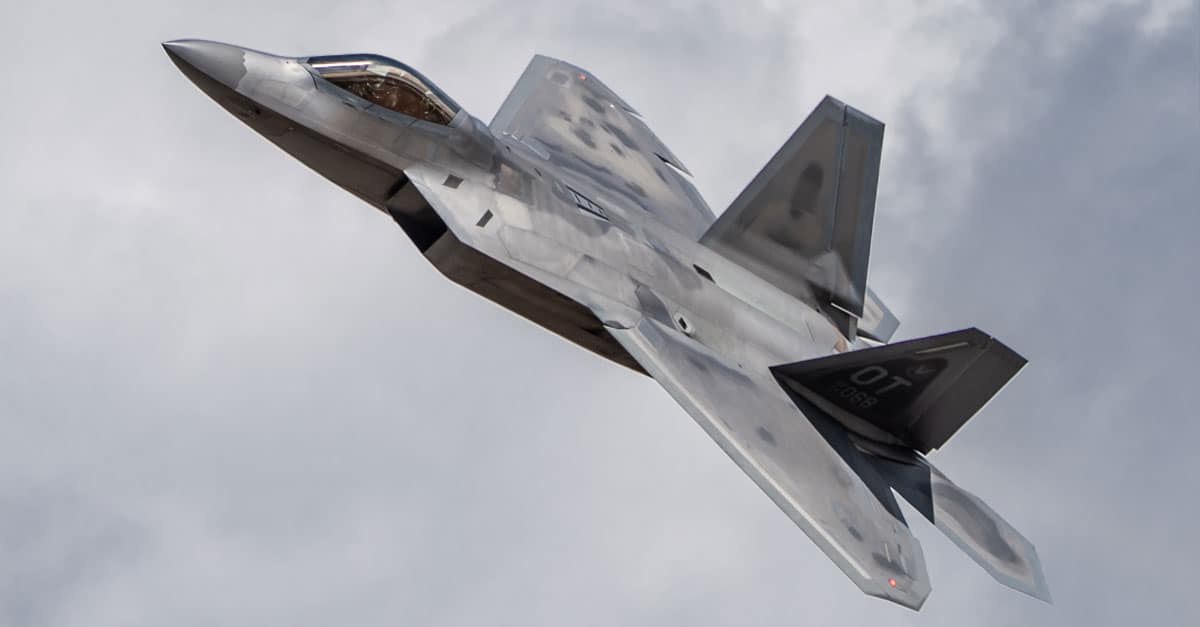
The F-22 Raptor is considered by many to be the most advanced fighter ever made and the very definition of air superiority. This is great news for Lockheed Martin, as it was their mission to produce a fighter whose capabilities had never been seen before. No other fighter combines the level of stealth, speed, maneuverability, weaponry, and avionics of the Raptor. The F 22’s first flight was in 1997 and finally entered service in 2005 as the F-22A. Since it was introduce into service, the F-22 has been identified as a critical piece of the air combat capabilities and has dominated the skies ever since. With all that being said, the development team for the F-22 won the Collier Award in 2006 which is American Aviation’s most prestigious award.
50. The F-22 Is Only Available In The United States
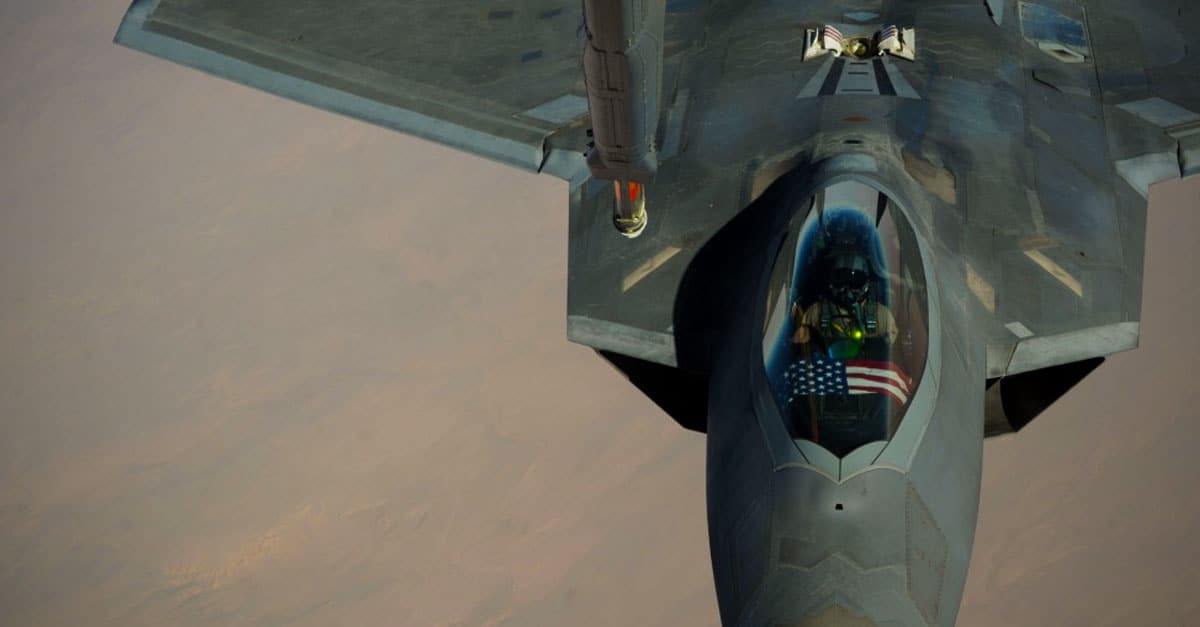
Lockheed Martin developed the F-22 Raptor exclusively for use by the United States. The Obey Amendment to the 1998 Department of Defense Appropriations Act prohibits the sale of the F-22 to foreign governments. Unlike the F-22, aircraft such as the F-35 Lightning II was intended for international sale with U.S. allies to help bring down the cost. One reason for the exclusion of selling F-22 abroad was concerns over technology leaks into the wrong hands.
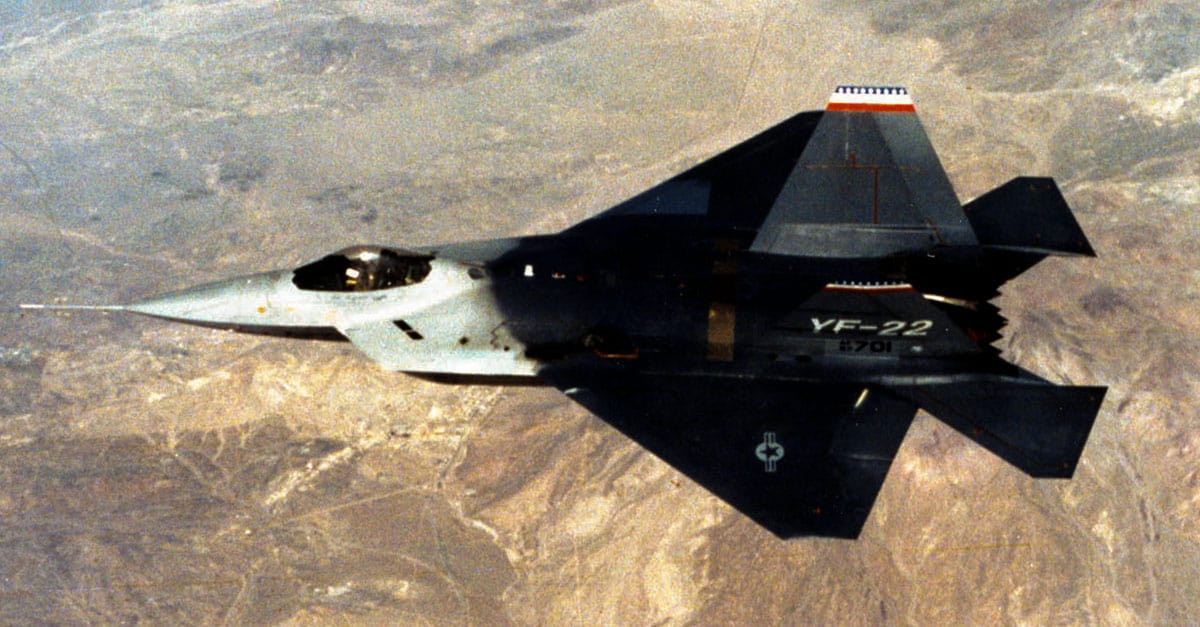
49. The F-22 Was The First Fifth-Generation Fighter

The F-22 Raptor was the first Fifth Generation fighter jet produced. In the 1970s, many American design projects believed the next-generation fighter aircraft required speed, stealth, and maneuverability. The F-22 displays these characteristics through advanced avionics, computer systems, networked sensors, low probability of radar detection, and a cutting-edge frame. In 2004, Lockheed Martin stated they had the only operating fifth- generation in service at that time.
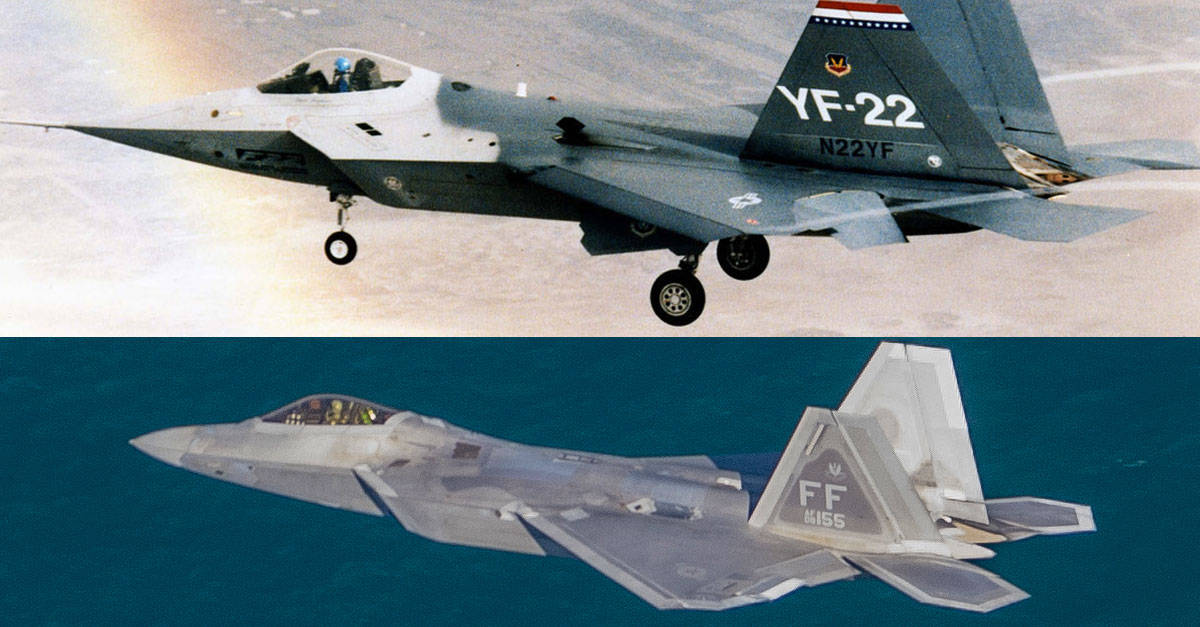
48. The YF-22 Was the F-22’s Prototype

In 1986, the Advanced Tactical Fighter (ATF) went into Demonstration and Validation phase for the replacements of the F-15 Eagle and F-16 Fighting Falcon. The two prototype aircraft developed included the Lockheed/Boeing/General Dynamics YF-22 and the Northrop/McDonnell Douglas YF-23. In 1990, the aircraft finished their first flight. Following the Dem/Val flight tests in 1991, the Secretary of the United States Air Force (USAF), Donald Rice, selected the YF-22 as the better of the two. Despite the YF-23 superior stealth and quickness, the USAF chose the YF-22 for its thrust vectoring nozzles which was more controllable as well as cheaper and less dangerous.
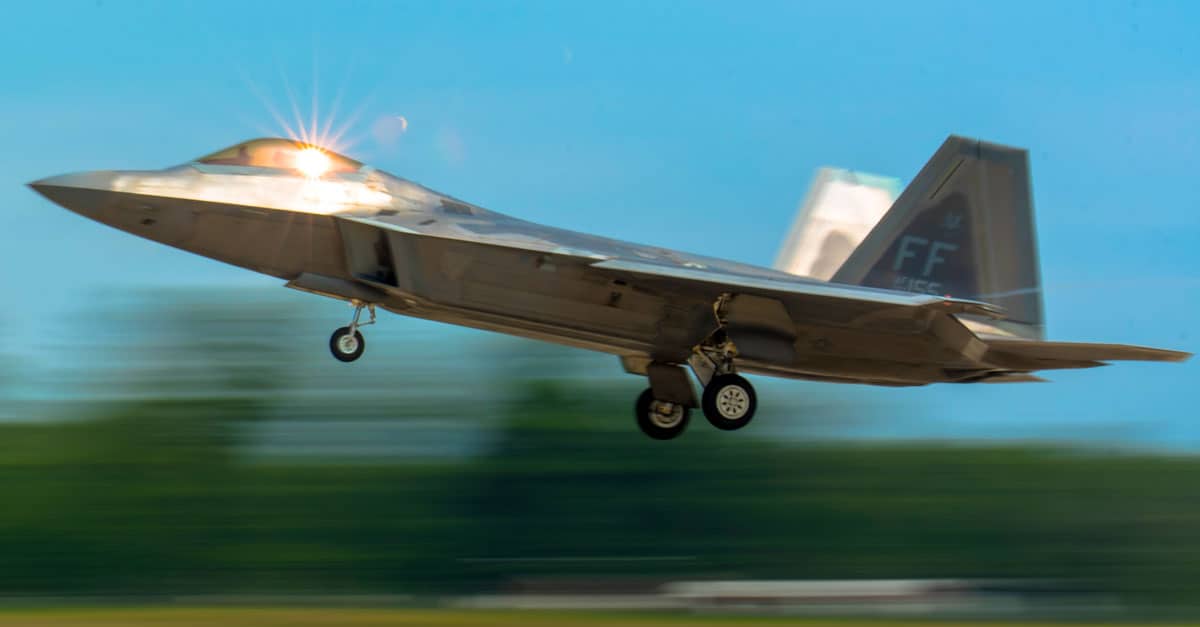
47. The YF-22 Design Was Significantly Altered For the F-22

Full Engineering & Manufacturing Development (EMD) began on the F-22 Raptor in 1991. The United States military awarded development contracts to Lockheed/Boeing (airframe) and Pratt & Whitney (engines). The manufacturers introduced significant changes from the YF-22 prototype, including moving the vertical stabilizers & engine intakes rearward as well as decreasing the leading edge & moving the canopy closer. The shapes of the wings and stabilator were also altered to increase strength and stealth features.
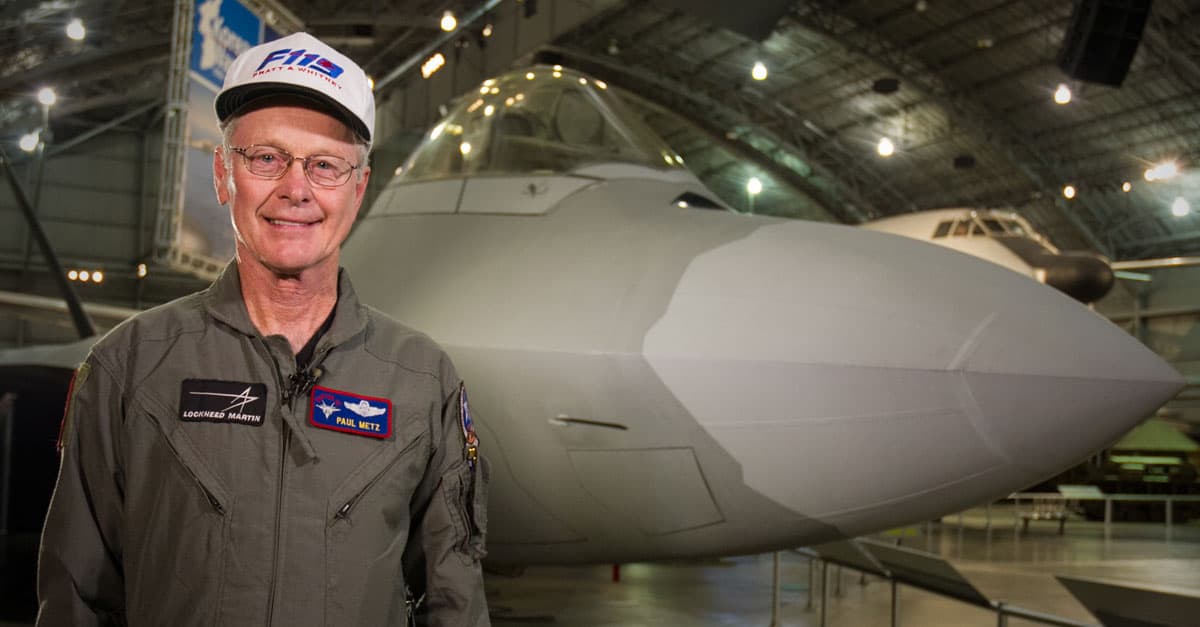
46. F-22 First Flight Was in 1997

On April 9, 1997, the first F-22 Raptor was revealed at Marietta, Georgia. It was an Engineering & Manufacturing Development (EMD) aircraft with the tail number 4001. The EMD first flight this F-22 on September 7, 1997. Following the flight, the aircraft was used for live-fire testing. At Edwards Air Force Base, California, EMD continued subsystem and system testing and flight test with nine aircraft.
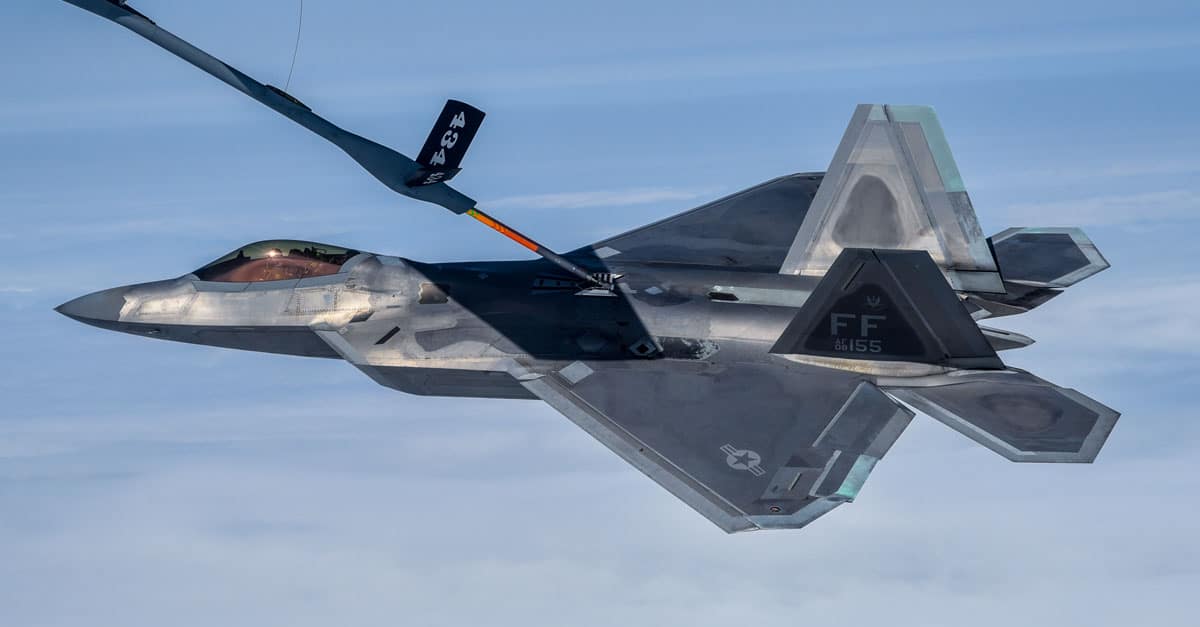
45. Paul Metz Was the First Pilot to Fly the YF-23 & the F-22

Paul Metz and his staff collaborated with engineers on the Northrop-McDonnell Douglas fifth-generation fighter jet contestant the YF-23. After selecting the YF-22, Mets worked two years on the B-2 bomber program serving as an engineering test pilot. He later became Lockheed Martin’s Chief Test Pilot for the F-22 ATF. He worked on it from 1992-2001. On September 7, 1997, he made the first flight on the F-22A.
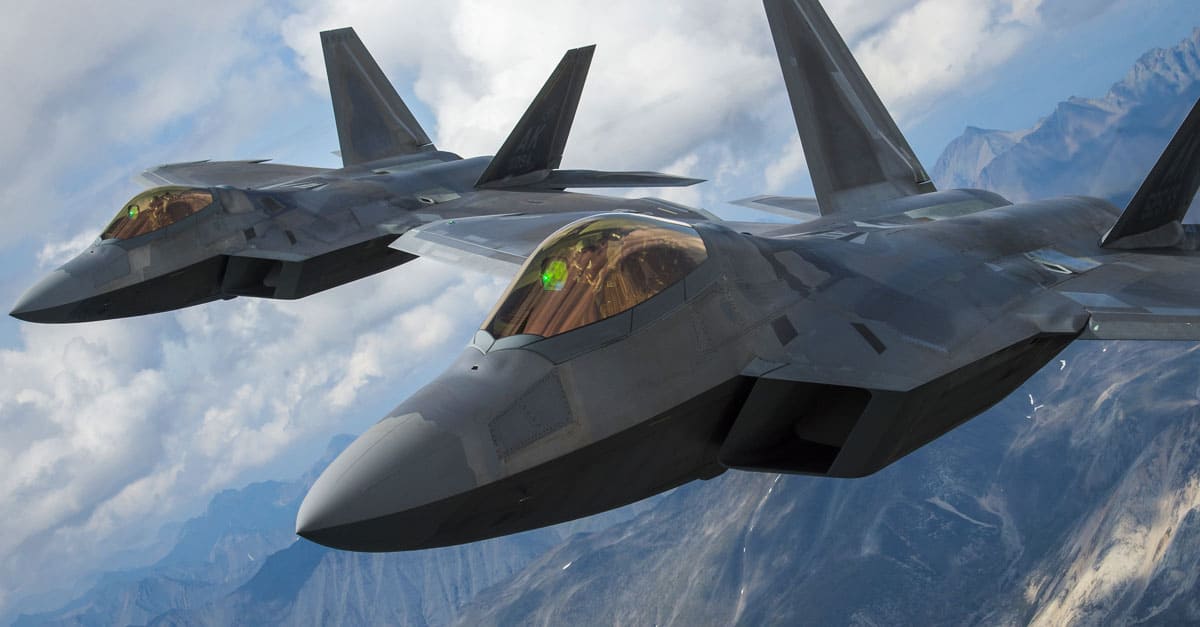
44. Steven M. Rainey Helped The F-22 Reach Many Milestones

Steven M. Rainey was the first United States Air Force Pilot (USAF) to fly the F-22 Raptor. In 1991, Rainy graduated from the United States Naval Test Pilot School in Patuxent River, Maryland. In 1994, Rainey began work for the F-22 systems program. It was here where Rainey hit plenty of landmarks for the aircraft. In 1998, he became the first pilot to conduct air-to-air refueling, and later that year performed the first non-stop cross country flight (4.5 Hours).
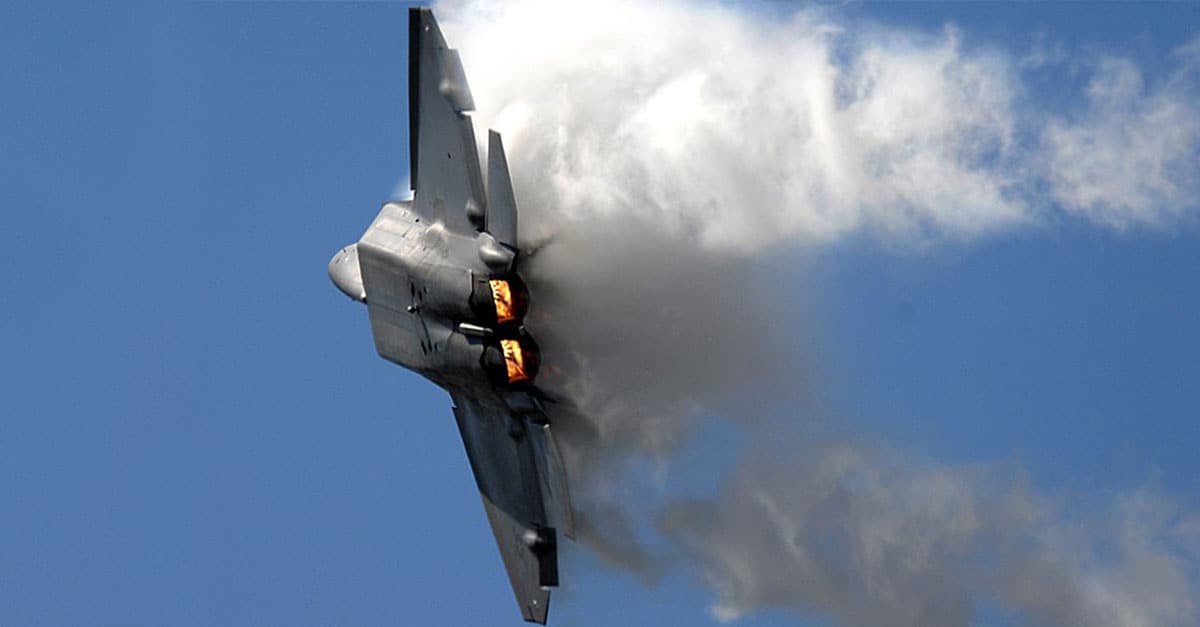
43. The F-22 Is Expensive

According to the U.S. Air Force Website, an F-22 Raptor unit costs around $143 million per unit. That does not include the research and development costs, which would bring the F-22 to $334 million. Also adding in the lifecycle cost, which includes fuel, parts, and maintenance, the Government Accountability Office estimates that a single F-22 cost around a whopping $678 million.
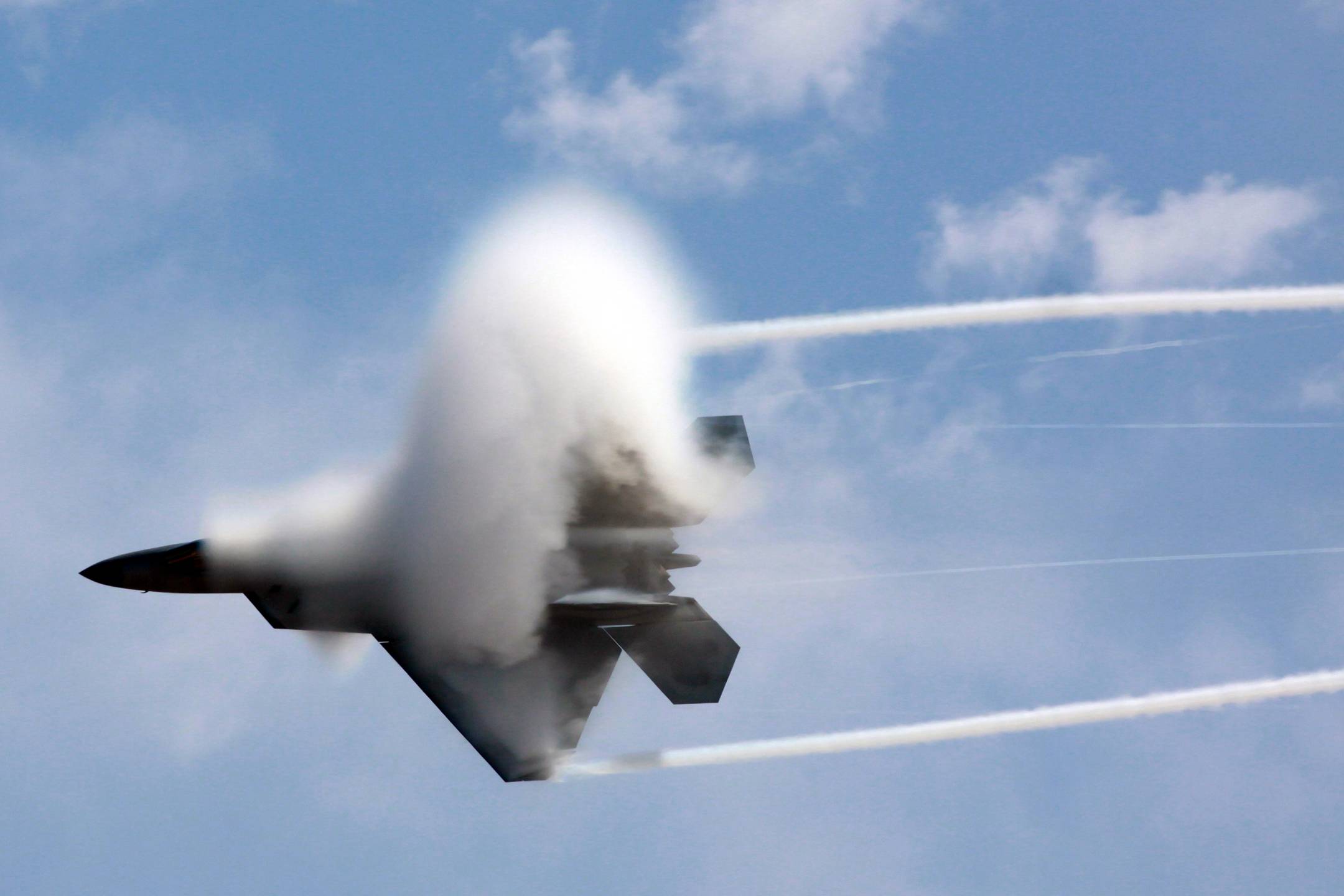
42. The F-22 Costs Upwards Of $60,000 Per Hour Of Flight

Not only does the F-22 Raptor cost a lot to manufacture; it is also expensive to fly. Time Magazine, in 2013, stated that the F-22A cost $68,362 per hour of flight. The massive price tag includes ownership costs such as modification of the aircraft. In 2014, for example, a fleet of F-22 needed around 40 hours of maintenance for each hour of flight.
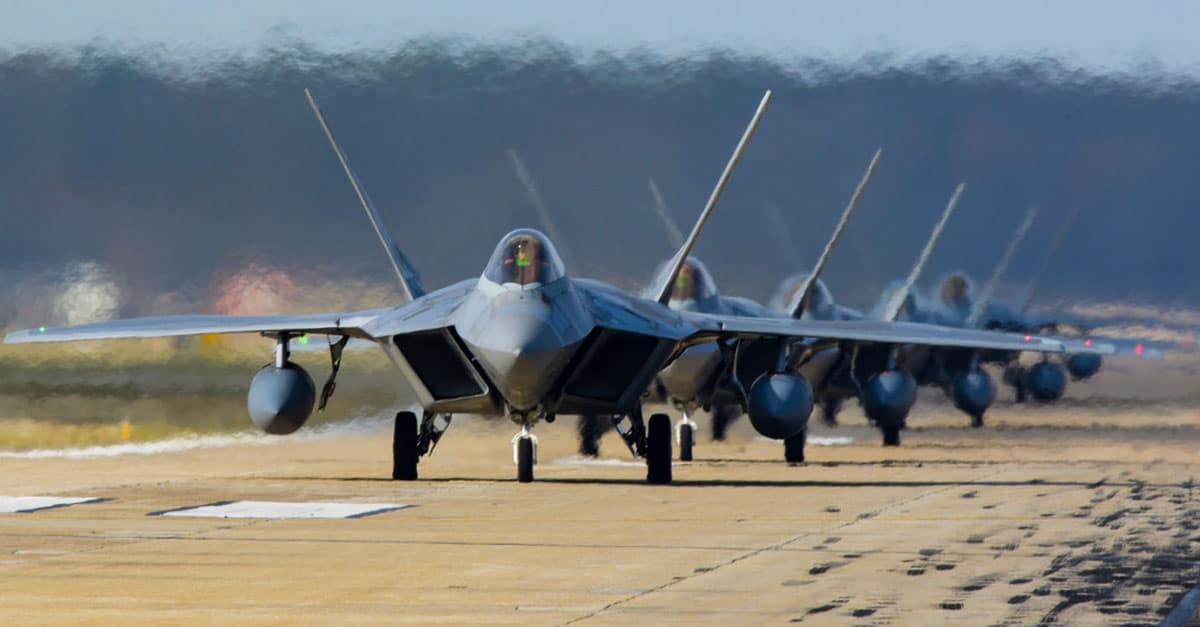
41. The Total Production Cost Of The F-22 Program Is Over $60 billion

In 2010, the Department of Defense (DOD) assessed the total acquisition cost of the F-22 program was around $67.3 billion in then year dollars according to the final selected Acquisition Report for F-22 procurement. The figure summarizes that around $32.4 billion went into research and development cost, $34.2 billion went into procurement cost, and $676.6 million went into MilCon Costs. The estimated price was not adjusted for inflation and did not account for aircraft built or repaired after 2010.
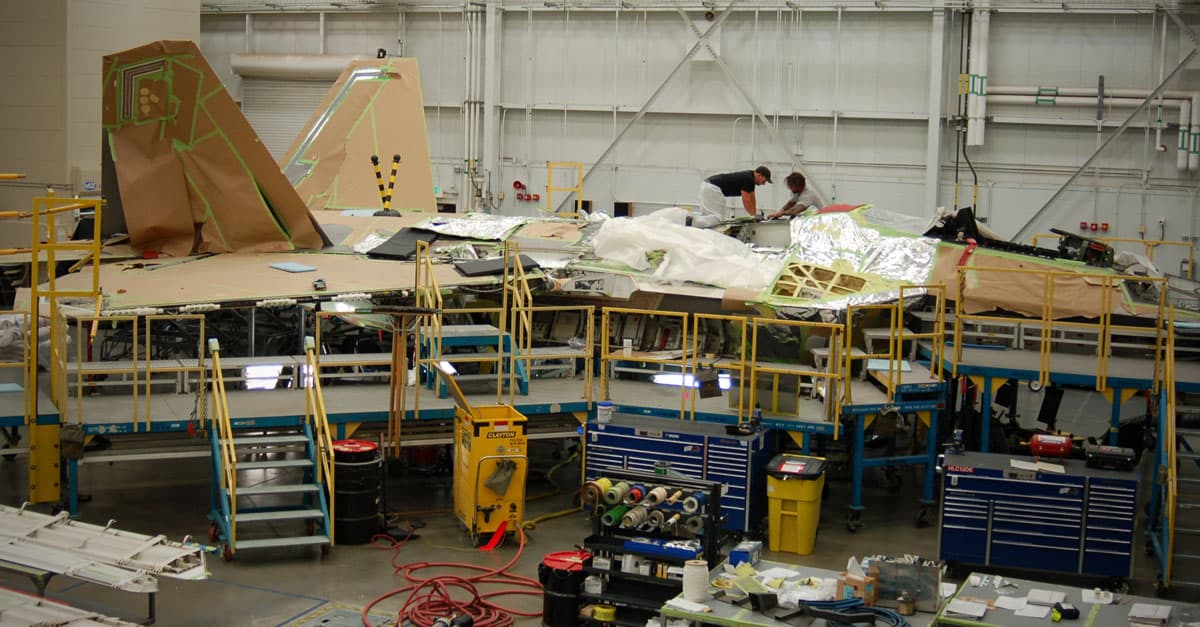
40. Only 195 F-22s Exist As Of 2019

In 1985, the United States Air Force originally planned on ordering 750 fifth-generation fighter units with production beginning in 1994. In 1996, however, the 1990 Major Aircraft Review decreased the number to 648 aircraft. The number of the now titled F-22 Raptors was further cut to 339 in 1997 then again in 2003 to 277. By 2004, the Department of Defense decreased the number of units to 183 aircraft. In 2008, a defense spending bill was passed by Congress that increased production of the F-22 to 187. In total, there are currently 195 F-22s with 187 operational units and 8 test versions.
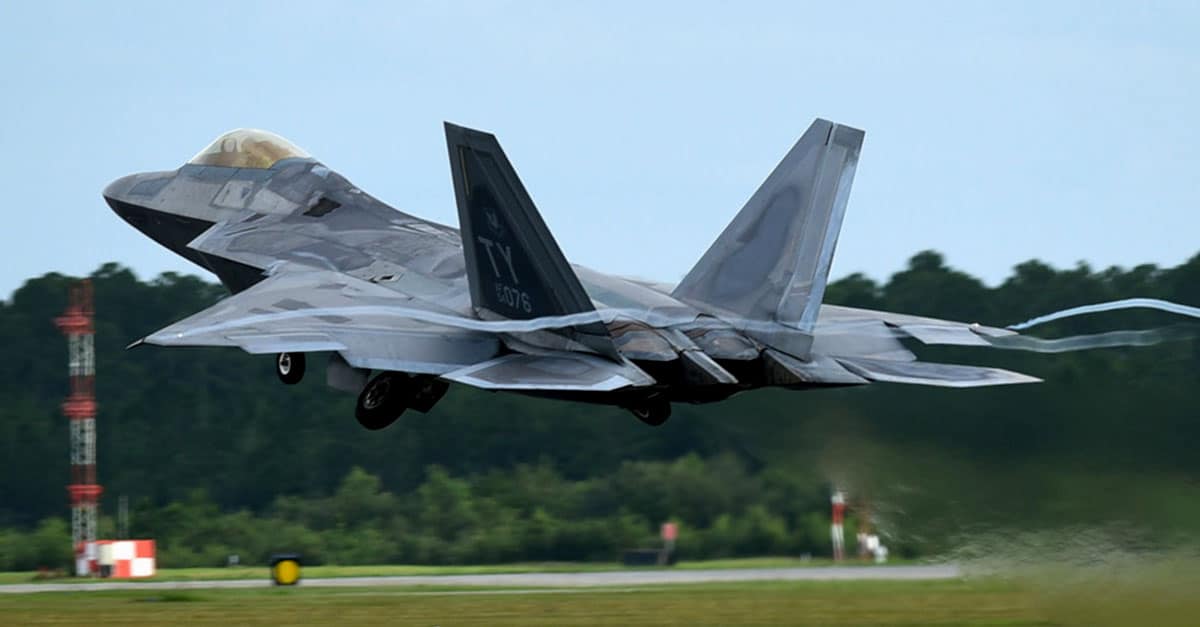
39. Production Of The F-22 Ended In 2011

During the 2000s, some in the U.S. Department of Defense continuously questioned the need and the cost of the F-22 Raptors. In April 2009, the Secretary of Defense Robert Gates called for the termination of the F-22 Raptor production in FY 2011. General James Cartwright, Vice Chairman of the Joint Chiefs of Staff, explained the decision to the Senate Committee stating that the reason for the termination came from the need to maintain the F/A-18 production as well as the movement of resources to the F-35. The final F-22 was completed in December 2011.
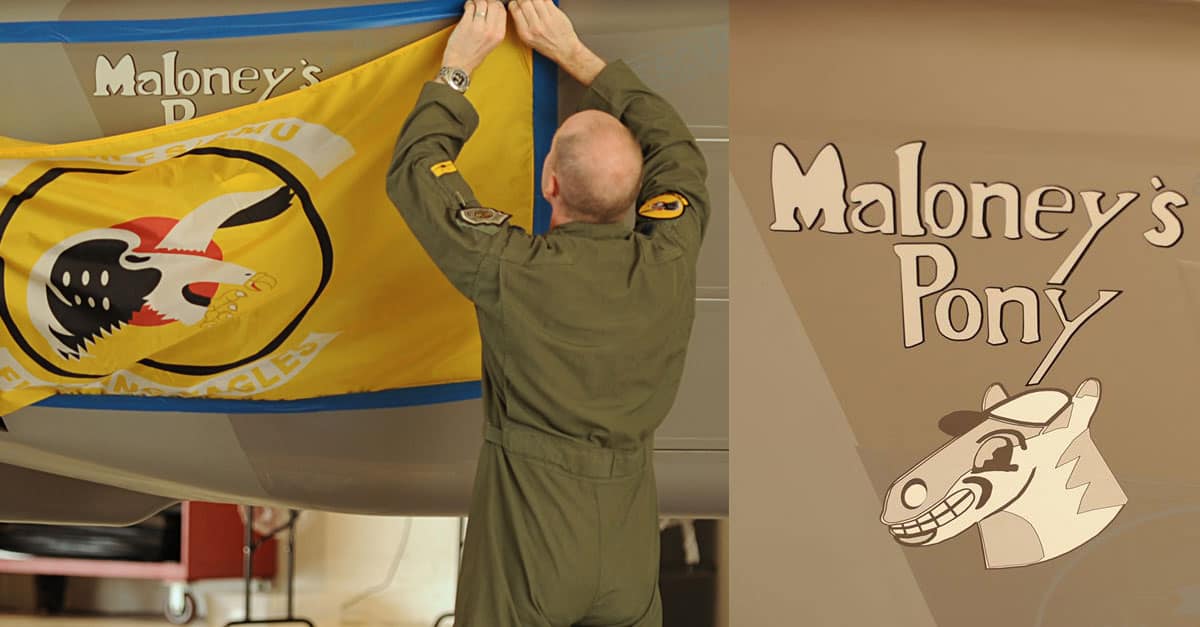
38. The 27th Fighter Squadron Obtained The F-22s First

The 27th Fighter Squadron based out of Langley, VA was declared the first operational squadron to fly combat-ready F-22 Raptors in 2003. In late 2003, the squadron received their first F-22A. On December 15, 2005, the Raptors reached Initial Operational Capacity. The 27th Fighter Squadron included 12 aircraft that worked as one deployable package qualified to perform air-to-ground and air-to-air combat.
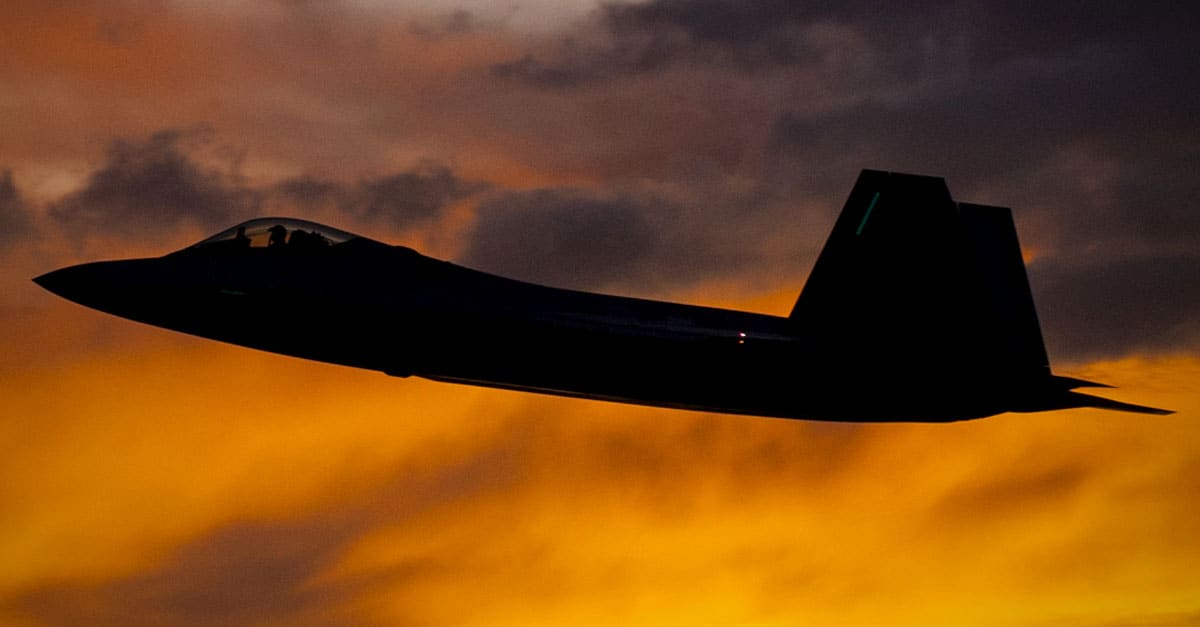
37. An F-22 Is Named Maloney’s Pony

In 2011, the 27th Fighter Squadron embellished the Maloney’s Pony insignia on to the F-22 Raptor No. 09-0174 fuselage in honor of Maj. Thomas E. Maloney. Maloney was a member of the 27th Fighter Squadron in World War II. He was the highest-scoring Ace at the time. During a strike mission in 1944, his P-38 Lightning named “Maloney’s Pony” crashed in the Mediterranean. Maloney however survived and was rescued by a French Farmer. For admiration of his heroics, the 27th Fighter Squadron traditionally names an aircraft in its fleet after Maloney’s. The new Maloney’s Pony would go onto lead F-22s first mission in Syria.
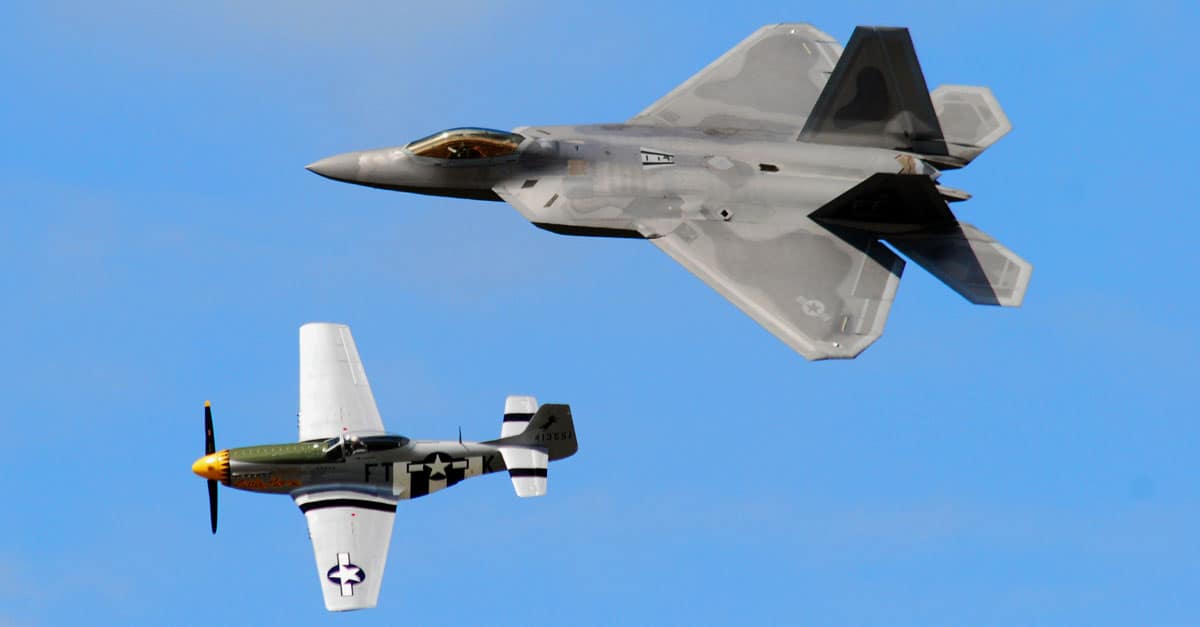
36. The F-22 Made It’s Combat Debut In Syria

On 22 September 2014, the F-22 Raptor made its combat debut in Syria. The United States trying to stop the terrorist organization ISIS performed the beginning airstrikes of Operation Inherent Resolve. The F-22 conducted 204 sorties over Syria between September 2014 and July 2015. The primary goal for the Raptor was to conduct close air support (CAS) escorting strike packages to their targets as well as deter aircraft from Syrian, Iranian and Russian forces trying to attack Kurdish forces and interrupting U.S. operations.
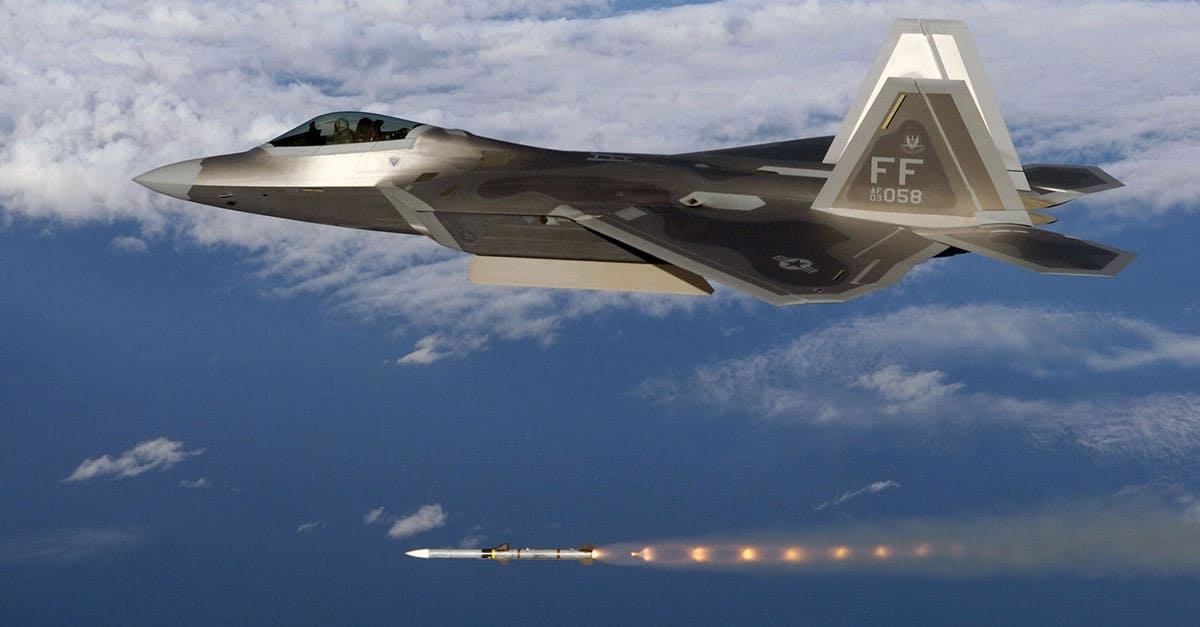
35. The F-22 Demonstration Team Performs at Airshows World Wide

In 2007, the F-22 Demonstration team was formed and selected Maj. Paul “Loco” Lopez II as a demo team pilot. Lopez was the first African American pilot to participate on the team. The F-22 Demonstration Team performs at air shows all around the world intending to build Air Force-public relations as well as display the aerobatic skill and maneuverability of the F-22 Raptor. Lopez says it is his mission to offer exposure to young people interested in aviation.
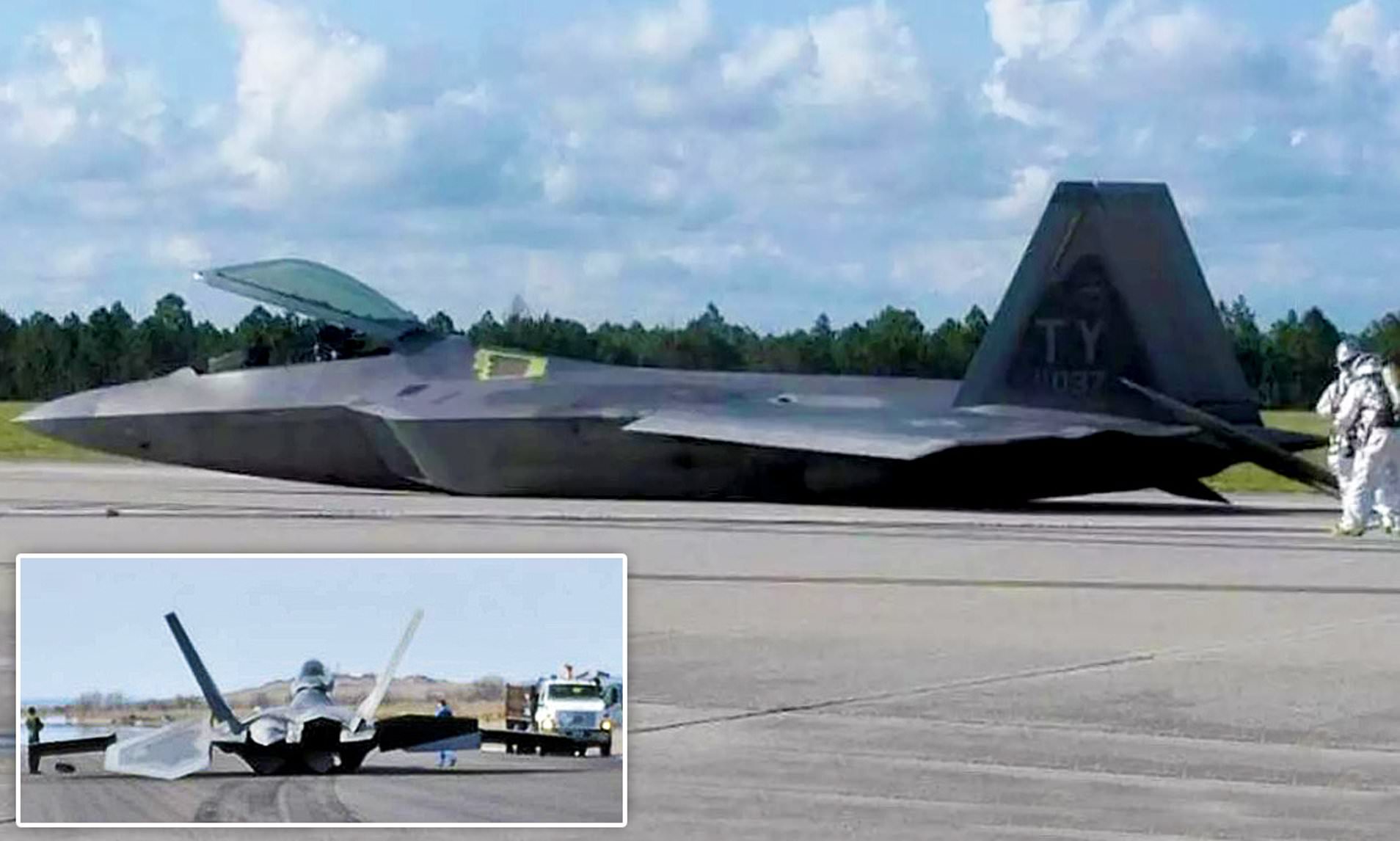
34. The F-22 is Deadly. It Achieved A Kill Ratio Of 108-0 In Exercise Northern Edge 2006

Early June 2006 in Alaska, twelve F-22 Raptors of the 94th Fighter Squadron participated in simulated combat exercises during Exercise Northern Edge. The aircraft proved its potential against 40 “enemy aircraft” by procuring a 108-to-zero kill ratio. Over two weeks, the F-22-led Blue Force had gained a total of 241 kills in air-to-air combat. Only two planes lost against the enemy (they were not F-22s).
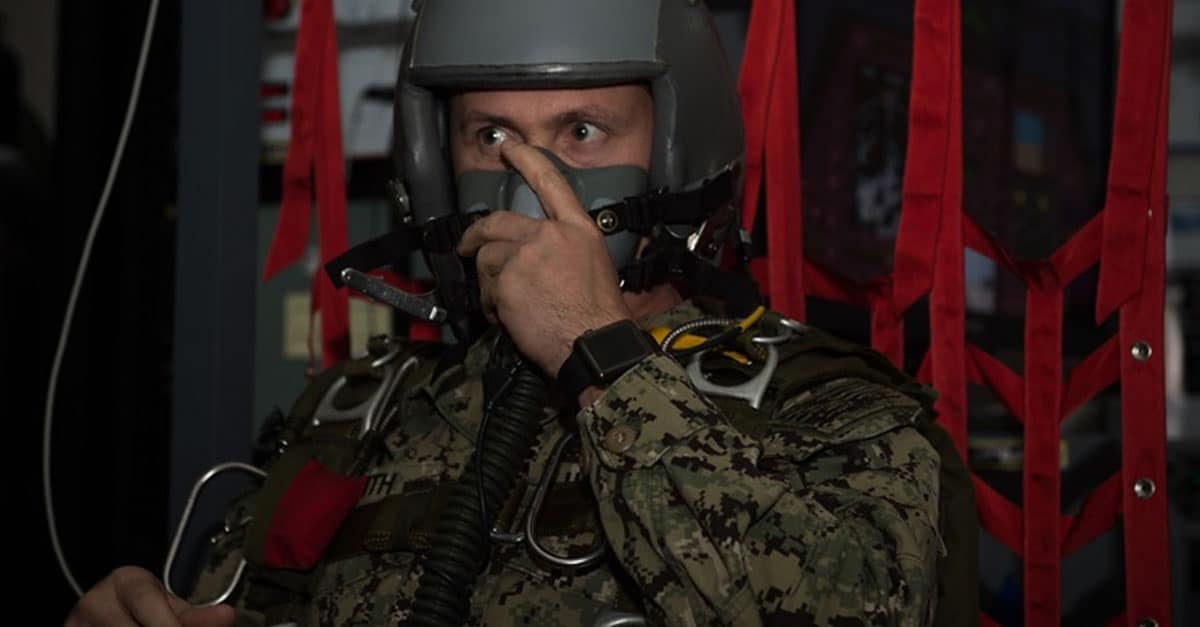
33. It’s Not A Perfect Program

Record-breaking, yes. Awe-inspiring, sure. But perfect and supported unanimously? No it is not. The expense of the F-22 Raptor program has many in Washington as well as those of us across the country concerned for wasteful spending. But then you remember why the U.S.A. is never under direct threat in the skies, and you remember it’s all worth it, baby.
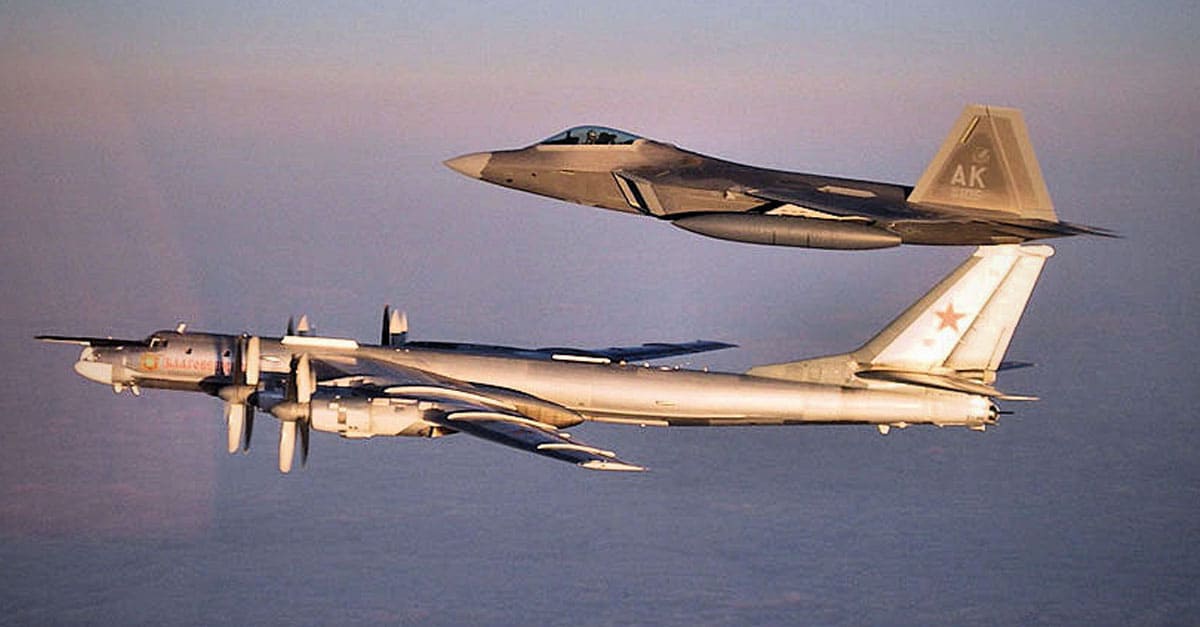
32. The F-22 Sometimes Causes Oxygen Deprivation For Pilots

In 2012, the United States Air Force held a summit in Ohio to go over one of the most significant problems plaguing F-22 pilots, dizziness from oxygen deprivation. The symptoms are often attributed to hypoxia, where there is a lack of oxygen going to the brain. Pilots experiencing the conditions are problematic because it can lead to bad judgment and tactical choices. One example includes a fatal crash in Alaska in 2011. Up to 2012, 25 aviators reported a sign of hypoxia and lack of oxygen. The Navy and Air Force argue the pilot’s breathing in some aircraft is affected by uncontrolled cockpit-pressurization
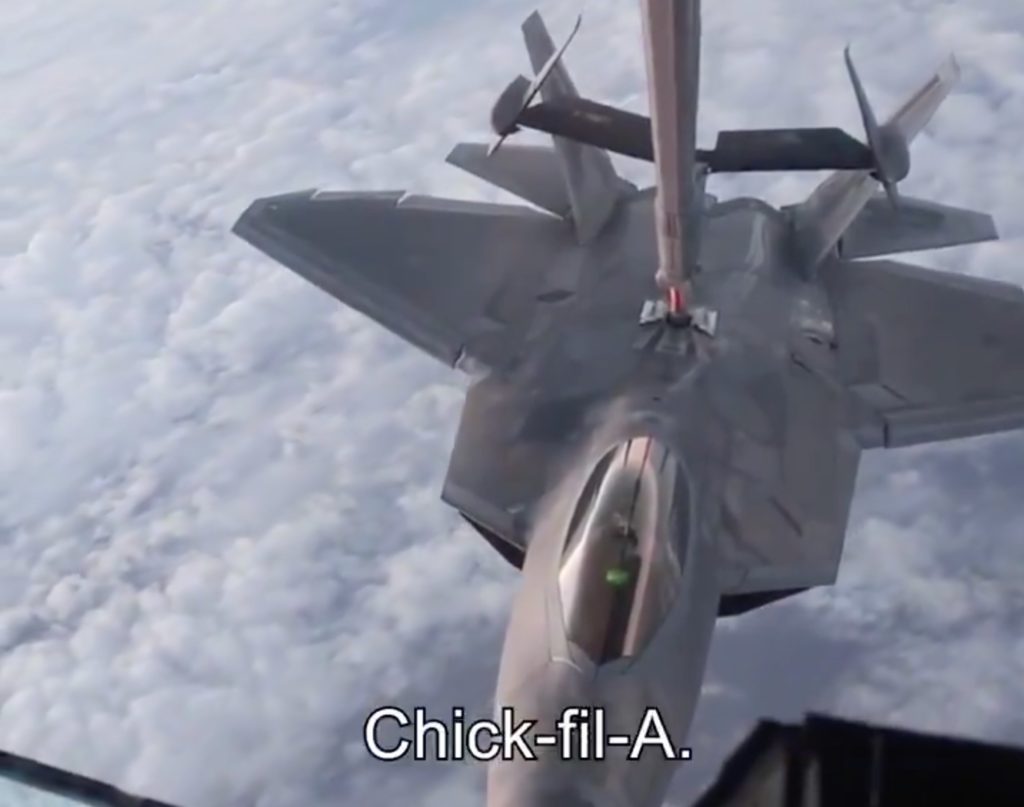
31. NORAD Can Swiftly Dispatch F-22s

The F-22 Raptor can quickly intercept foreign aircraft. For example, on March 4, 2019, North American Aerospace Defense Command (NORAD) scrambled out two F-22 Raptors each with an E-3 airborne warning and control system to intercept four Russian bombers and two Su-35 Flanker-E fighter aircraft that entered Alaskan air defense identification zone (ADZIZ). The next day, NORAD initially sent out an additional pair of F-22s to intercept two Tupolev Tu-95 Bear bombers. They ended up dispatching two more when the second group of Russian bombers accompanied by two Sukhoi-mad fighters reentered Alaskan ADZIZ.
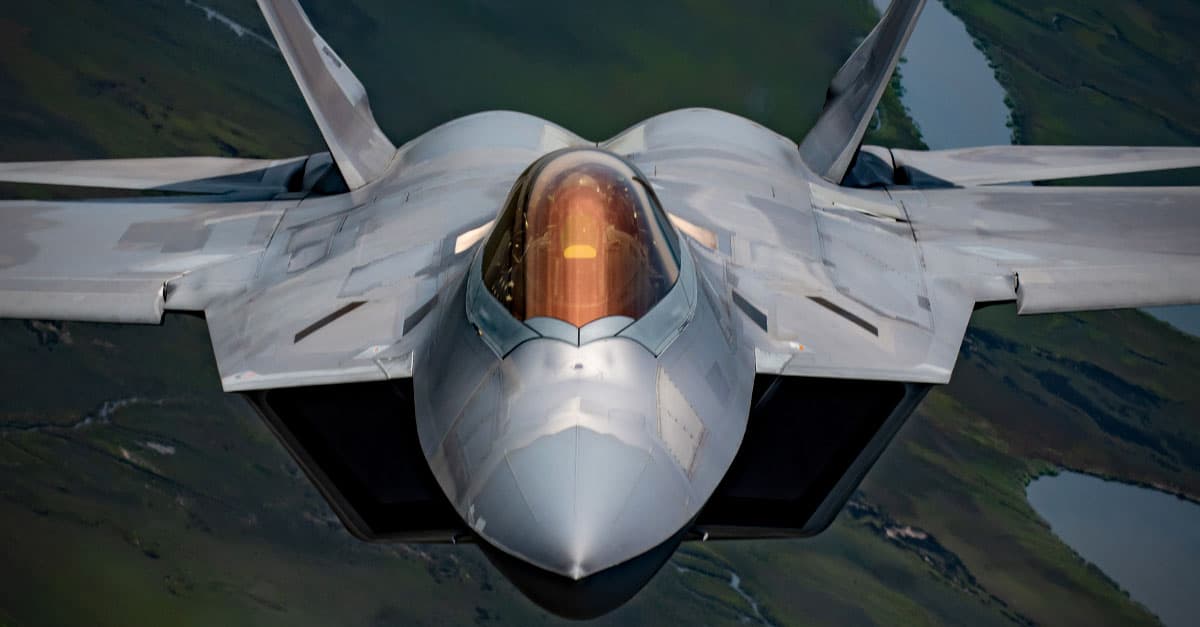
30. F-22 Pilots Love Chick-Fil-A

It’s easier to show you than to tell you.
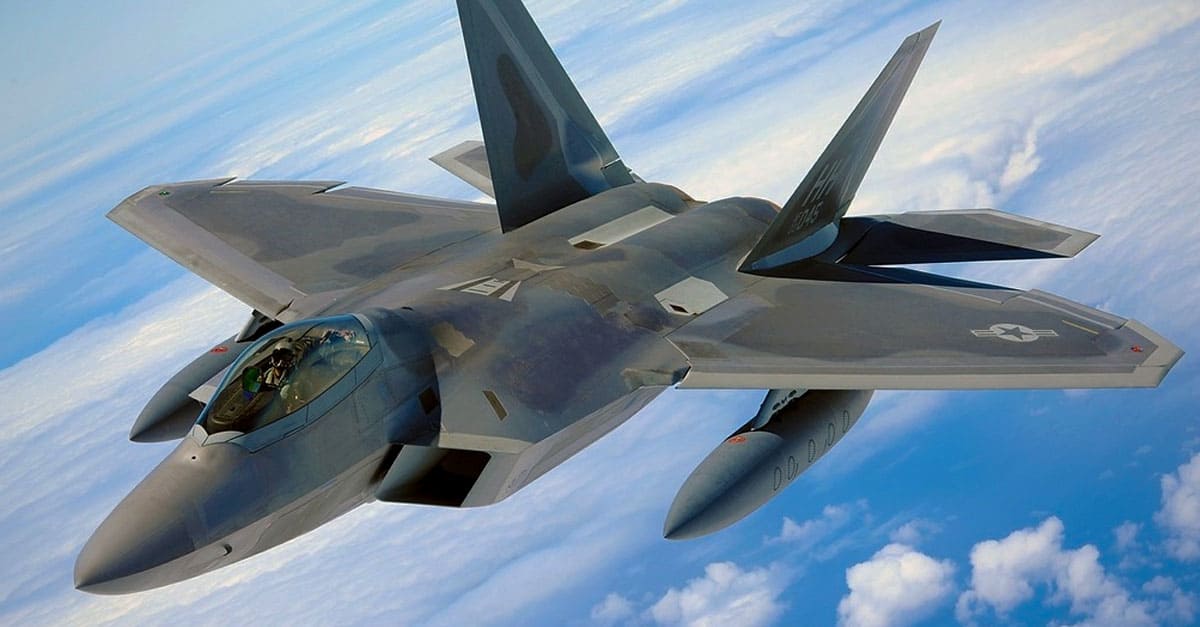
29. The F-22 Is A Big Fighter Jet

The F-22 Raptor has a length of 62 feet and 1 inch (13.6 meters). The aircraft’s height is 16 feet, 8 inches (5.1 meters). The wingspan is 44 feet, 6 inches (13.6 meters). The F-22’s weight is 43,340 pounds (197,700 kilograms), while the maximum takeoff weight is 83, 5000 pounds (38,000 kilograms).
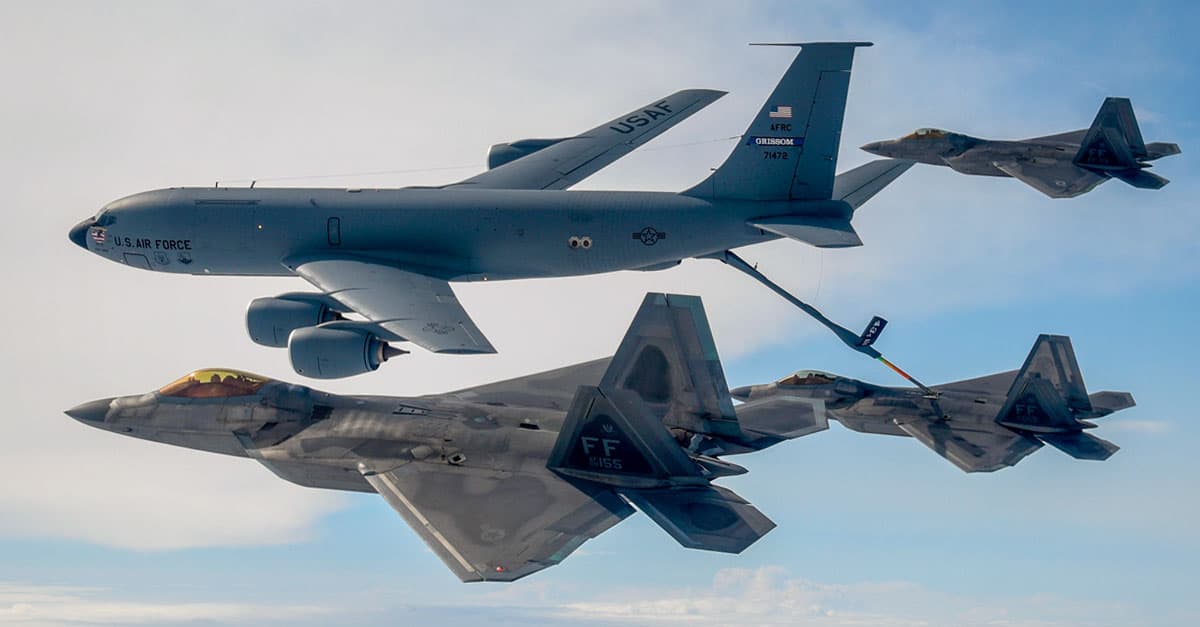
28. The F-22 Has A Long Airframe Life

The F-22A was built for 8,000 flight hours, but after years of use, the United States Air Force (USAF) believes the aircraft unmodified is capable of 12,000 hours of airframe life. It might even be possible for the F-22 to reach 15,000 hours. In comparison, aircraft such as the F-4 Phantom II only has an airframe life of 3,500 hours. In The National Interest, the USAF proposes that the current F-22s would be combat-ready through 2060.
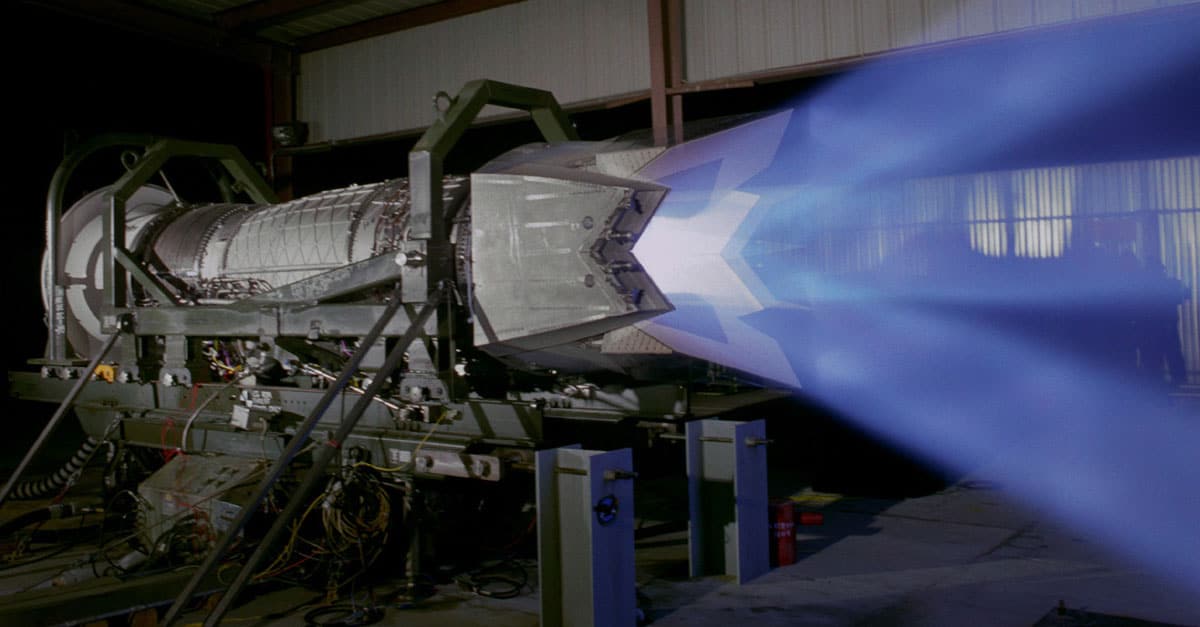
27. The F-22 Has A Ferry Range Of 1,850 Miles

According to the United States Air Force, the F-22 Raptor, with two external wing fuel tanks, has a ferry range of 1,850 miles. That is 1,600 nautical miles (nmi). While not quite as good as earlier fighters such as the F-16 with an estimated ferry range of 2,600 miles or 2,277 nmi it is still decent. Often aircraft like the F-22 can remain airborne with aerial refueling from KC-135 tankers.
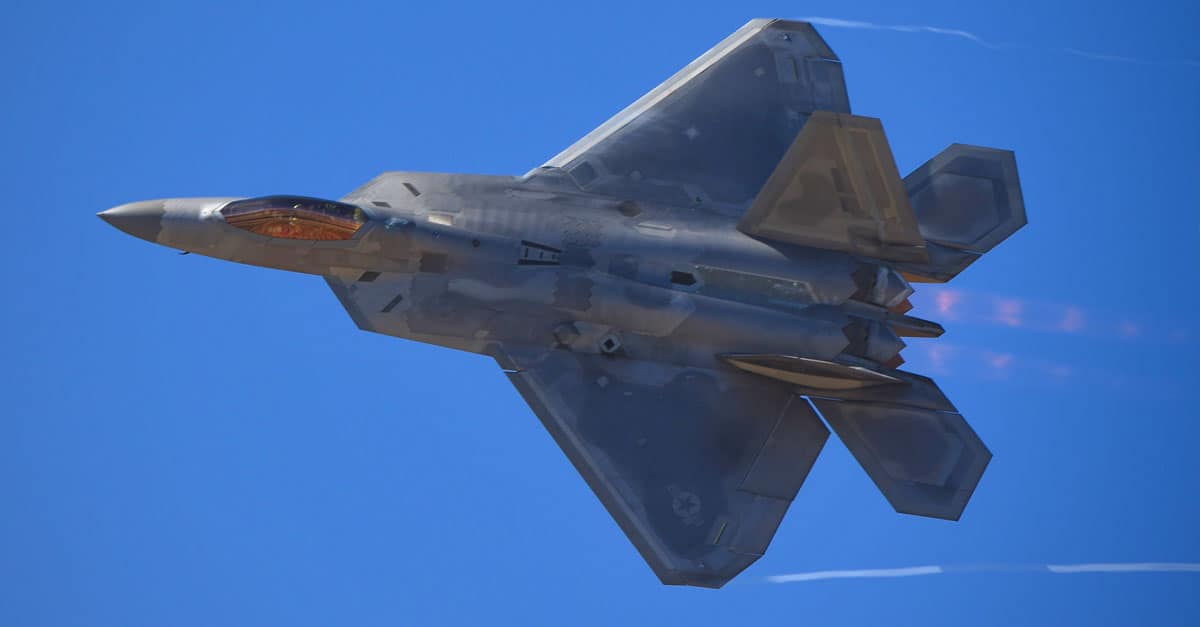
26. The F-22s Two Engines Can Reach Supersonic Speed Without Afterburners

The F-22 Raptor is powered by two Pratt & Whitney F119-PW-100 turbofan engines. The engines push out 35,000 pounds of thrust. In comparison, the F-15 engine can only put out 25,000-29,000 pounds of thrust. The engines, along with the F-22 design, allow the Raptor to fly at supersonic speeds with a smaller amount of fuel. The Raptor has supercruise ability, which means it can achieve supersonic speeds without using the afterburner, which most aircraft use to achieve this feat.
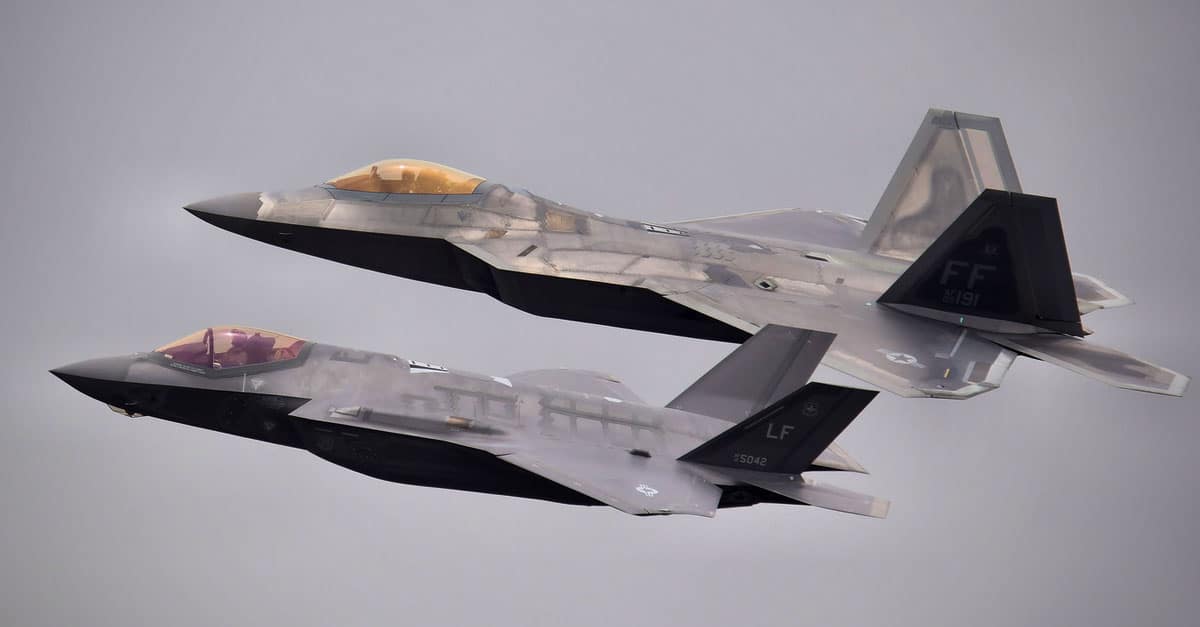
25. The F-22 Vector Nozzle Allows For Greater Maneuverability

Unlike most aircraft which have nozzles that point straight out of the engine, the F-22 Raptor contains a vectoring nozzle which allows the pilot to move it up and down by 20 degrees. Gas exiting the vector nozzle help push the airplane’s nose up or down which expands the roll rate of the aircraft by 50 percent. Since thrust vectoring is built into the F-22s flight control system, the pilot can operate it automatically. The nozzle will move in the correct direction when the pilot turns the aircraft as well as the elevator, rudder, and aileron. The result gives the F-22 more excellent maneuverability than other fighters.
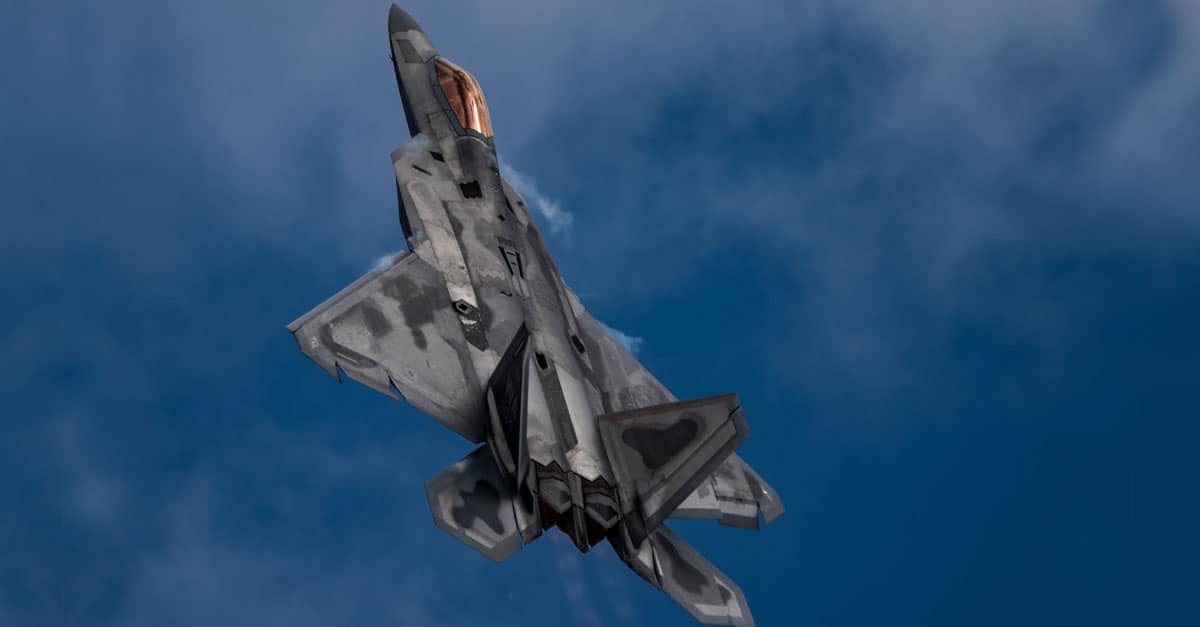
24. The F-22 Helped Spur Development For Thrust Vectoring Into Western Production

The F-22 Raptor’s Pratt & Whitney F119 Turbofan along with its vector nozzle created thrust vectoring for enhanced maneuverability for the aircraft. Development for thrust vectoring use designed for maneuverability did not occur in other fighter aircraft until after the F-22 deployment. The F-22’s thrust vectoring system helped bring widespread development of the system to Western production. Today, a few aircraft such as the F-35B use thrust vectoring for movement.
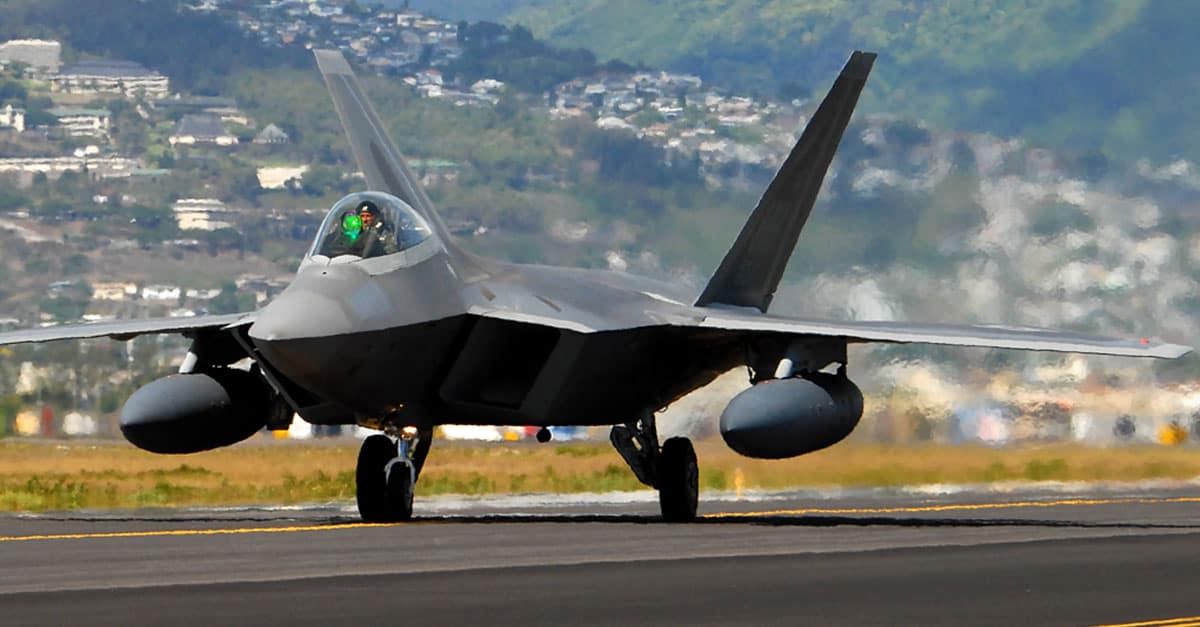
23. The F-22 Is Fast & Can Fly As High 50,000 Feet

The F-22 speed is considered Mach two class through supercruise capability. With the enlarged thrust and the F-22 Raptor’s aerodynamic design, the aircraft can reach average combat speed of Mach 1.5 or higher supersonic airspeed without using the afterburner. With the afterburner, the Raptor speed gets amplified faster than Mach 2. The F-22 can also reach a ceiling of 50,000 feet (15 kilometers).
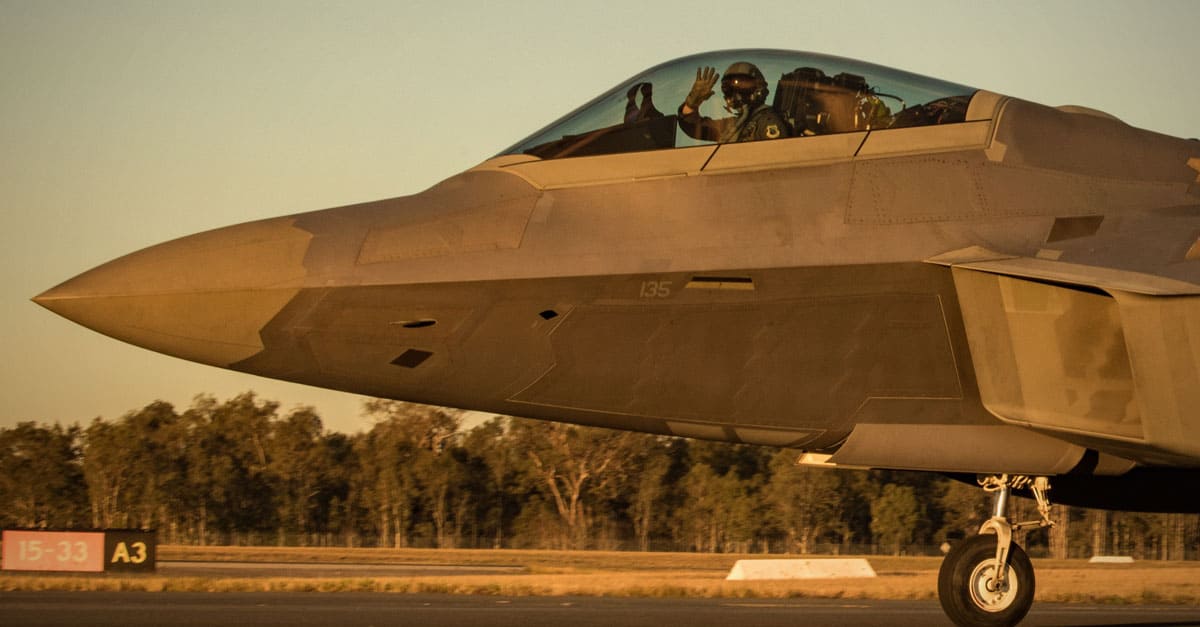
22. The F-22 Suffered From A Major Software Issue On Its First Overseas Flight

In February 2007, 12 F-22 Raptors of the 27th Fighter Squadron were flying from Hickam Air Force Base, Hawaii to Kadena Air Base in Okinawa, Japan. The flight was the first overseas deployment for the aircraft. En route, some F-22s encountered a software issue. The error affected the aircraft’s navigation system while crossing the International Date Line. With clear skies, the Raptors returned to Hawaii for repair. The journey was delayed by two days.
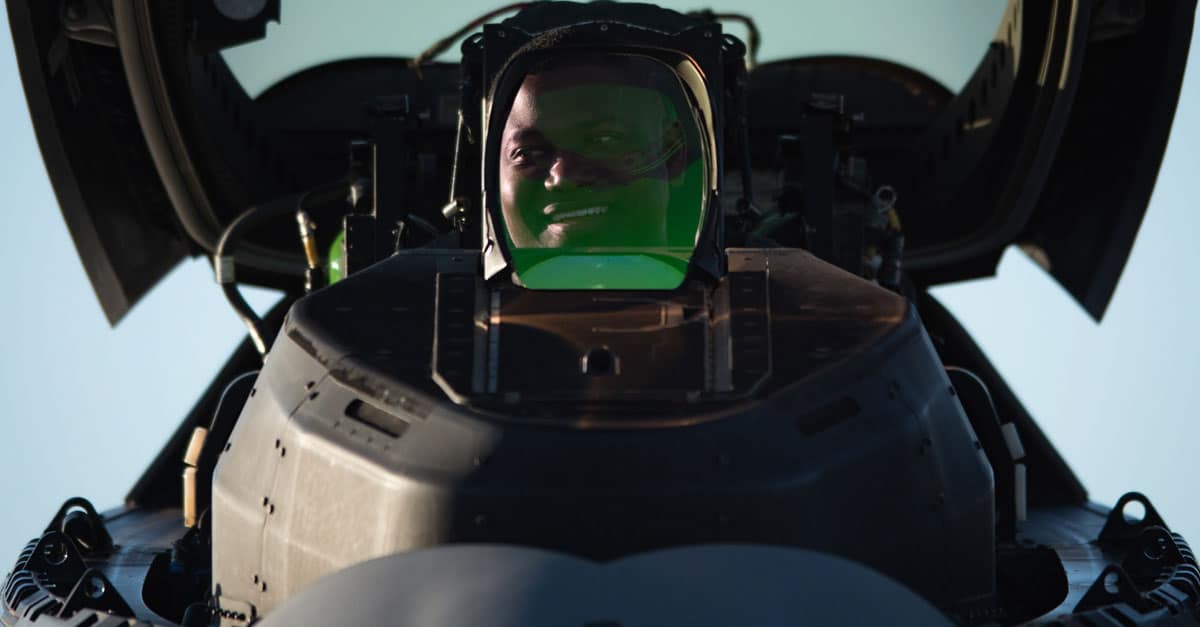
21. Only One Pilot Is Needed In The F-22

F-22 Raptors are fitted with modern electronics and instruments to locate and fight enemies. In other aircraft, these two systems are usually separated in the cockpit. With the F-22, however, the system was produced to let one crewperson manage everything that was initially only capable in two-seat aircraft like the F-15 Strike Eagle. The F-22 avionic systems are the first of its kind to include electronic warfare systems, radar and weapons management compacted into the overall flight system.
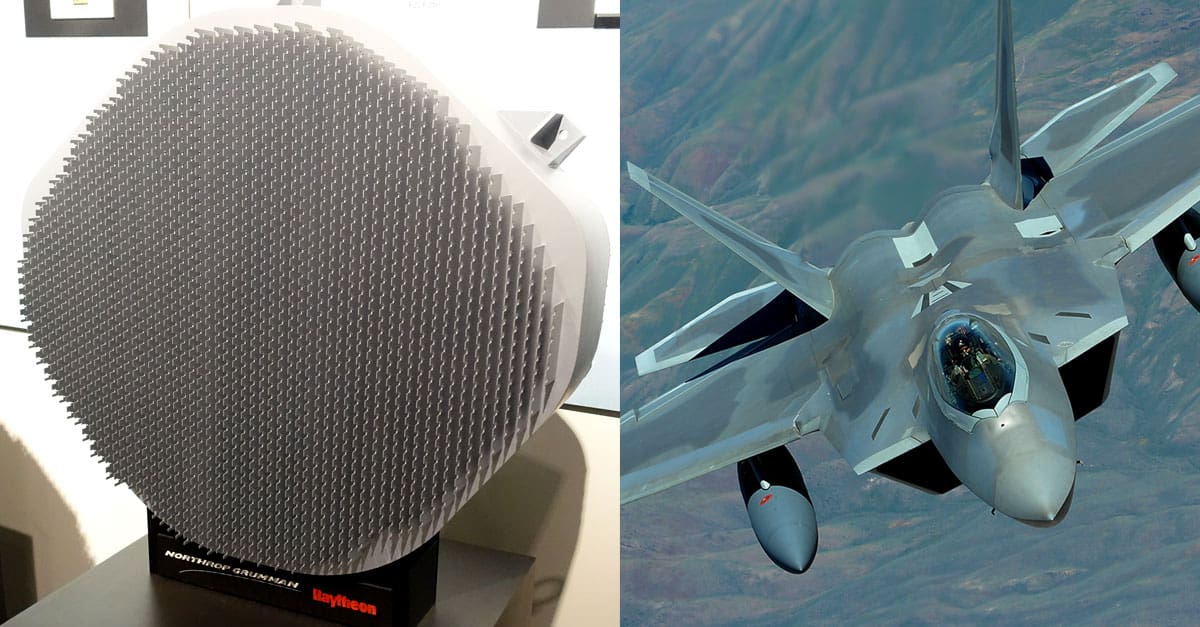
20. The F-22 Cockpit Contains Technology To Display Information To The Pilot

The F-22 Raptor cockpit is advanced. It is the first aircraft cockpit system designed in mind for night vision goggles. The F-22 contains a heads-up display (HUD) that can project info such as weapon status. Along with these, the cockpit includes six LCD screens which provide tracking information, navigation, air-threat and much more. Also, the aircraft has a hands-on throttle and stick control (HOTAS) installed as well as an integrated control panel (ICP) that allows the pilot to enter data for navigation, autopilot & communication. The result of these items makes it more efficient for the pilot to manage a great deal of information.
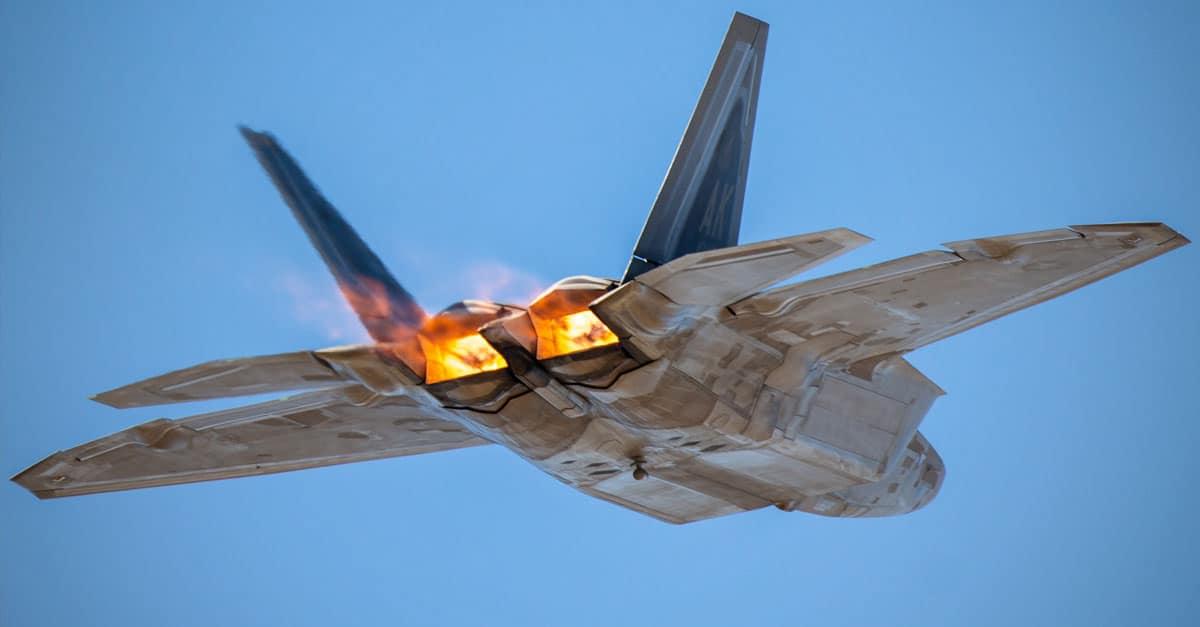
19. The F-22 Includes AN/APG-77 Radar For Stealth Capabilities

The AN/APG-77 radar is a critical component of the F-22 Raptor’s stealth capabilities. The radar was created for strike operations & air-superiority. It includes mechanisms such as all-weather capability, an active aperture, and an Active Electronically Scanned Array radar (AESA) of 2,000 transmitter/receiver modules. The AESA performs “agile frequency,” which makes it challenging for opponents to detect the aircraft. The AESA also has a low radar cross-section and target detection. The AN/APG-77 will give the pilot comprehensive information before the F-22 is ever detected. Over a secure link, the radar also communicates voice and data information as well as jam adversary’s electronic systems.
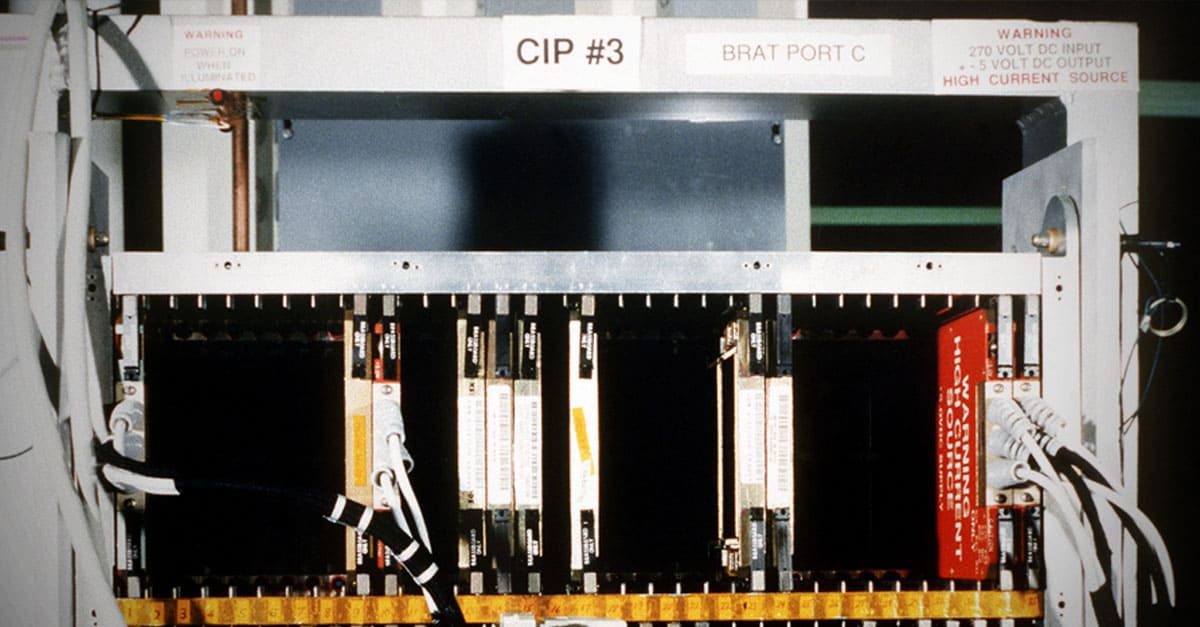
18. The F-22’s AN/ALR-94 System Can Quickly Detect Threats

The AN/ALR-94 system was built to counter threats of the F-22 Raptor. It integrates offensive and defensive electronic warfare options including radar warning, targeting support and self-protection. The AN/ALR-94 system geolocates enemies by revealing their radar at certain distances. Since the system has long-range detection, it restricts the F-22s radar emission which could give away its own location. The data the AN/ALR-94 collects gives the pilot supreme situational awareness as well as the ability to respond to threats quickly.
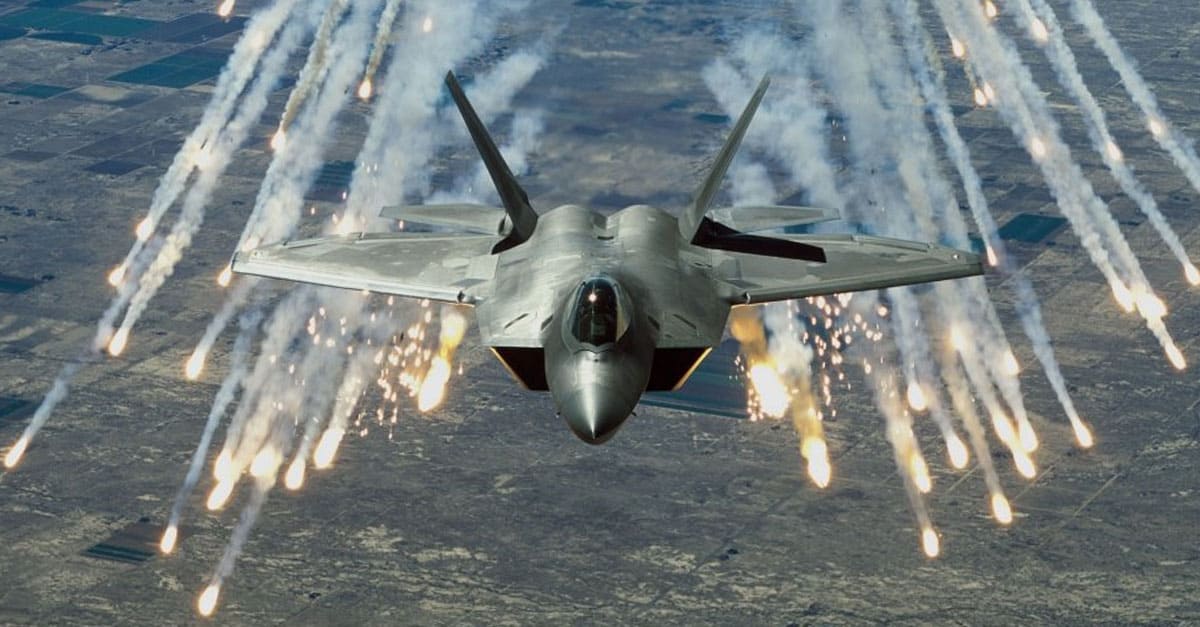
17. The F-22 Contains Two Common Integrated Processors (CIP)

The F-22 Raptor contains two Hughes Common Integrated Processors (CIP) for Core Processing. The CIP works as the brains for the avionic systems. It processes radar and Communication/Navigation/Identification (CNI) data. Seven different types of processors handle the information. The CIP has open slots that will allow more processing power for future development. Currently, the CIPS are each capable of processing 10.5 billion instructions per second. The CIP can also use a process called multi-sensor fusion where it combines information gathered from the radar and other sensors to filter them into a common view.
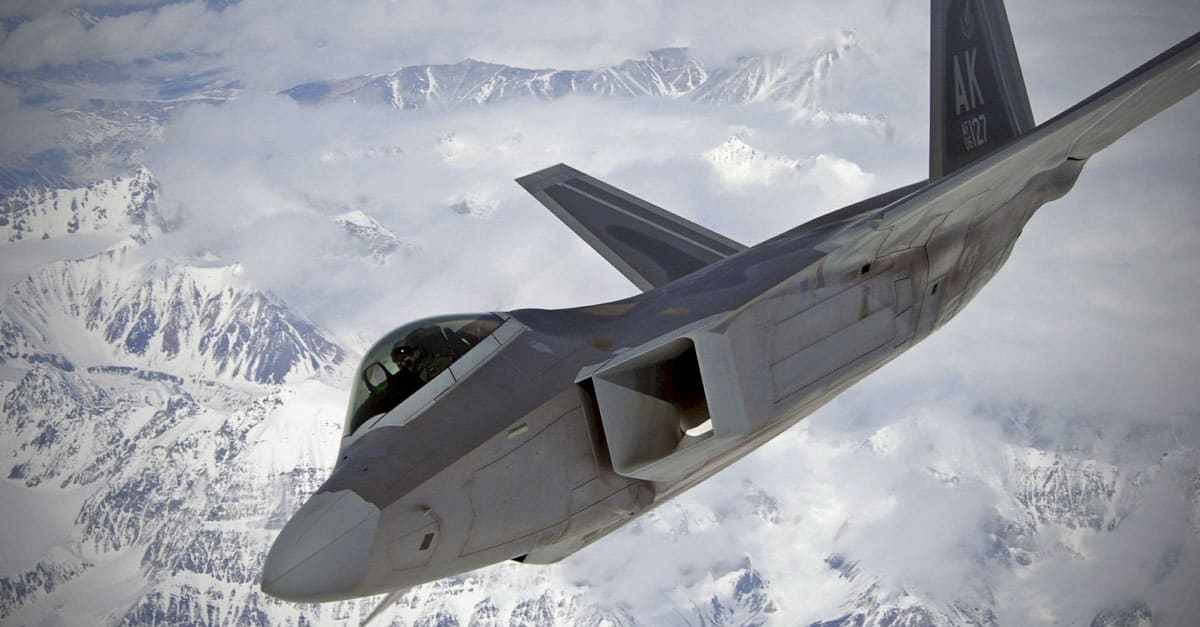
16. The F-22 Has Countermeasure Capabilities Against Radar & Missiles

Outside of stealth, the F-22 has countermeasure capabilities if enemies detect it. The aircraft contains a missile-launch detector and a radar warning receiver. If an adversary uses radar-guided or heat-seeking missiles, the F-22 will shoot flares. The flares obscure the heat seekers detection. The aircraft will also release chaff. Chaff is little shards of reflective material. The chaff will scatter radar waves confusing radar-guided missile tracking systems.
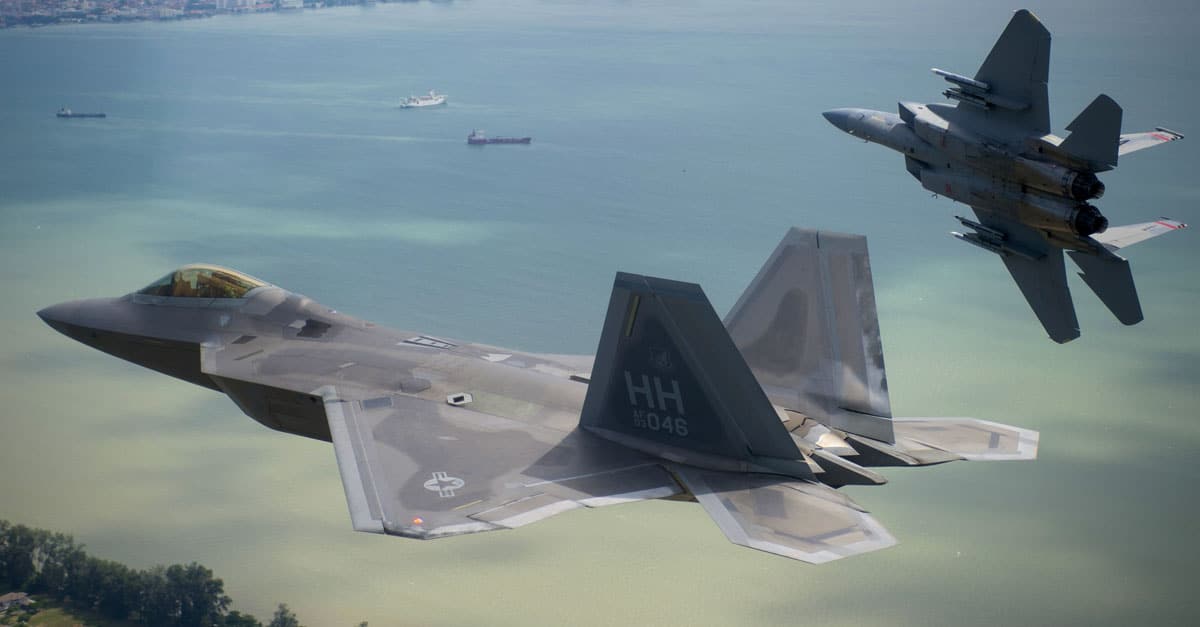
15. The F-22 Design Minimizes Radar Detection

The F-22 Raptors angular shape was purposeful. The aircraft has plenty of curved shapes with shifting radii. The reason they are curved is it allows the aircraft to break up radar beams when it is hit rather than enemy’s radar retrieving the beams. On the exterior, there are zero right angles. The design includes sawtooth edges aligned across the outside of the cockpit. These edges appear on the opening and doorways as well. The edges perform a similar function to the curves by scattering radar beams. The wings, on the other hand, are designed, so the aircraft appears smaller on enemy’s radar. The F-22 designers accomplished this by aligning the edges of the main wing and rear wing.
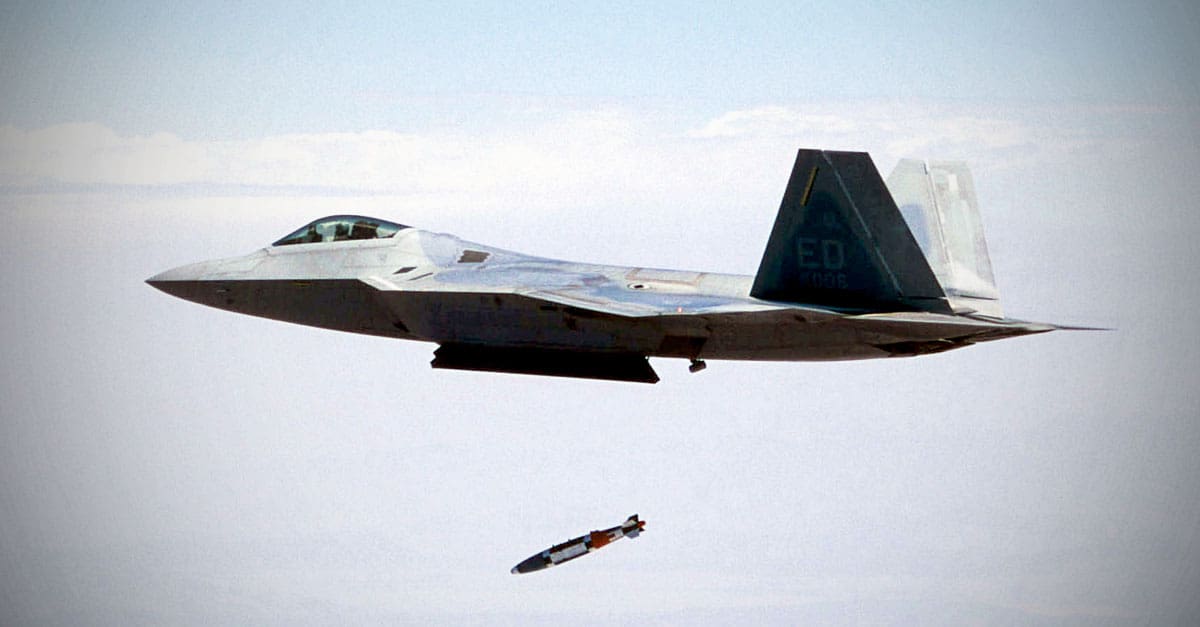
14. F-22 Fins Are Built For Stealth

F-22 Raptor has a giant twin-tail vertical stabilizer. Unlike other fighter jets like the F-15, the twin tail is angled to correspond with the shape of the aircraft. The purpose is to deflect radar. The fins even hide internal antennas to conceal the F-22 further. The horizontal fins at the rear of the aircraft, on the other hand, reduce detection from the F-22’s thermal and infrared signature by shielding its engine exhaust heat.
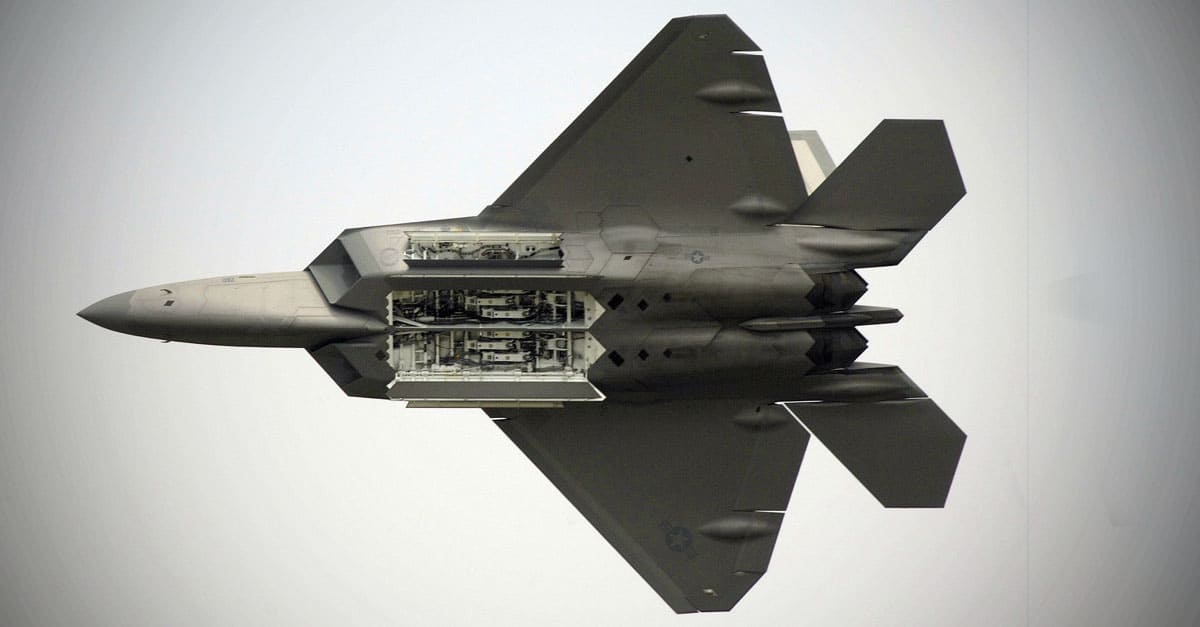
13. The F-22 Weapons Selection Is Slim

Despite the F-22 Raptors ability to hold a multitude of weapons, the variety of compatible weapons is limited. The size and type of weapons assigned to the aircraft have to be exact. Therefore that leaves F-22 restricted to short-range AIM-9 Sidewinder and medium-range AIM-120 AMRAAM missiles for air to air combat and JDAM bombs for air to ground combat.
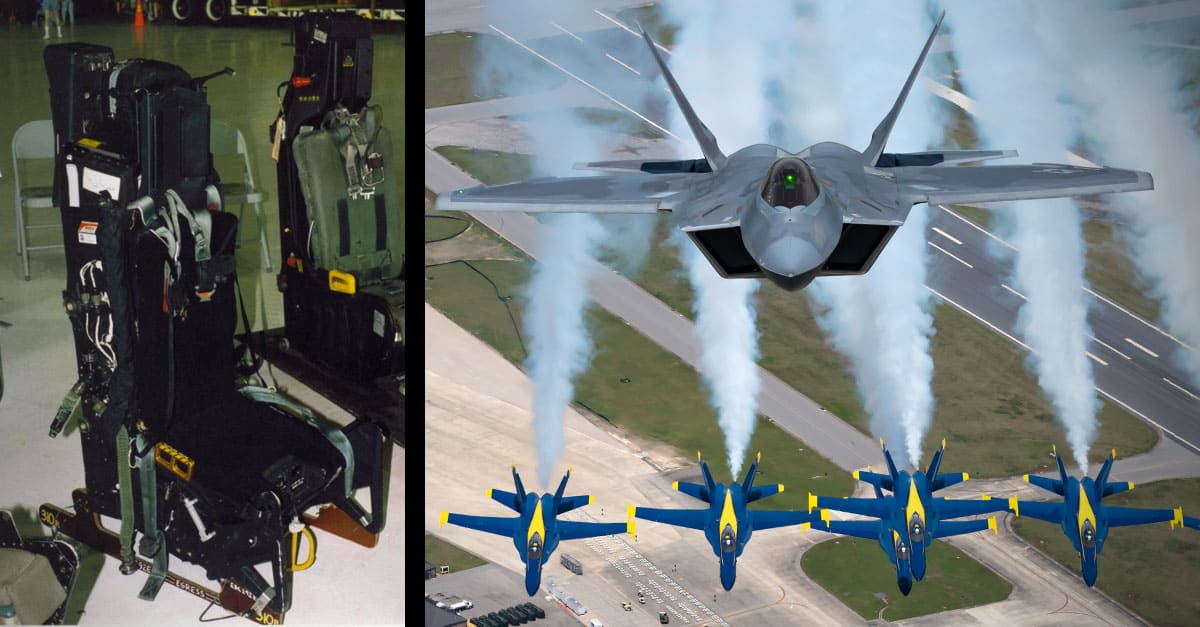
12. F-22 Holds Its Weapons Internally

Unlike the F-15 and F-16, the F-22 Raptor holds its weapons internally. It carries all its weapons inside its fuselage. There are three bays on the aircraft. The main bay can support six AIM-120 AMRAAM missiles (or two JDAM bombs for ground attack); the other two bays hold two AIM-9 Sidewinders. There are also M61A2 20-mm multi-barrel cannon hidden behind a stealth door. The purpose of the internal design is to lessen visibility, but if stealth is not a necessity, the F-22 is more than capable of carrying weapons and fuel tanks under its wings externally.
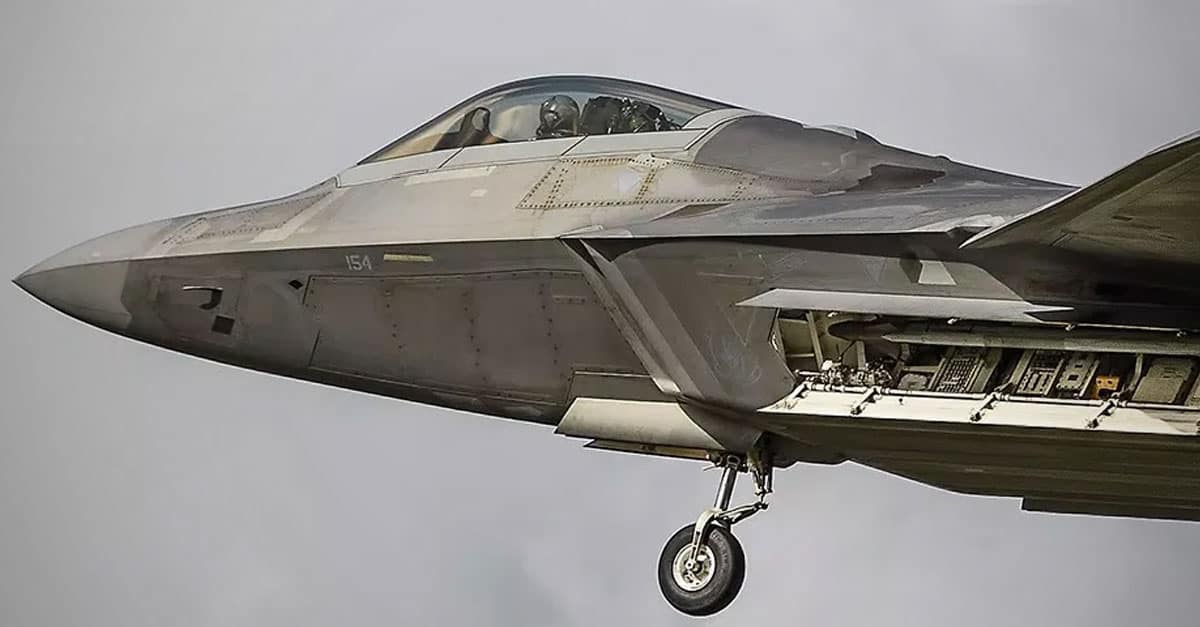
11. The F-22 Has the Same Ejection Seat Used In The F-15 & F-16

While new seats for the F-22 Raptor were researched, like its F-15 & F-16 predecessors, the F-22 Raptor ended up utilizing a McDonnell Douglas ACES II (Advanced Concept Ejection Seat). While most ACES IIs incorporated into an aircraft use connected firing handles to trigger the canopy jettison systems (pulling either work), the F-16 & F-22 only use one handle. Due to the room available in the cockpit, the handle was placed under the pilot’s legs.
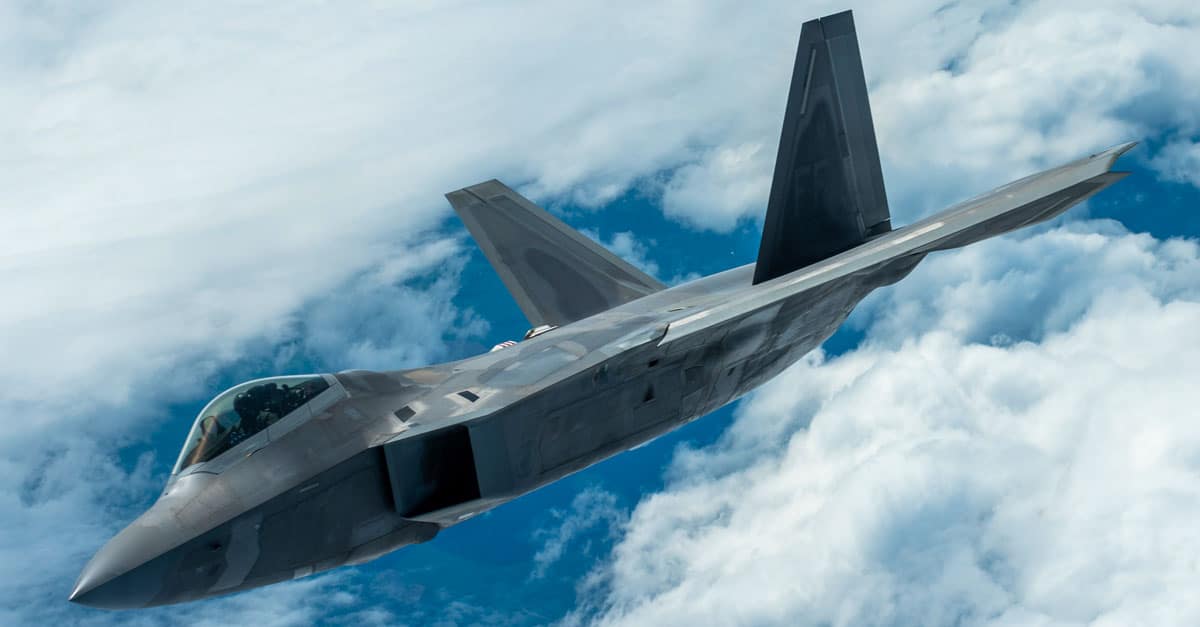
10. The F-22 Stores Management System (SMS) Does A lot

The F-22 Raptors has a primary subsystem called Stores Management System (SMS). The monitors for SMS regulates and categorizes the internal weapon bay doors, countermeasures, the aircraft artillery as well as launch sequences. The SMS also operates the emergency weapon jettison of stores. The SMS contains an SMS controller, two AIM-9 power supplies, and two rows of Standard electronics modules format E (SEM-E).
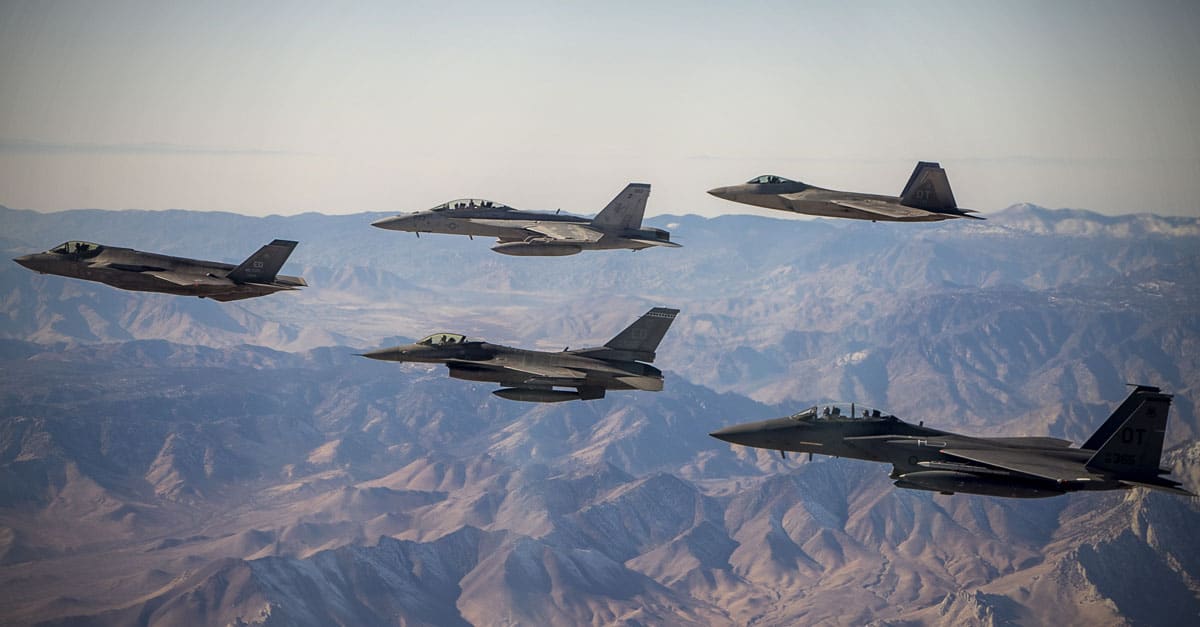
9. The F-22 Software Performs Many Functions & Has 1.7 Million Lines of Code (As of July 2019)

The F-22’s software gives the avionics system’s complete functionality. The software contains precisely 1.7 million lines of code written in ninety percent of the Department of Defense’s standard computer language programming code Ada. The avionics software incorporates three blocks, each building on top of the last one. The first block is for radar capability, the second block is to start senor fusion, and the third block includes full sensor fusion. Lastly, Block 3.1 inserts capacity for Joint Tactical Information Distribution System (JTIDS) and GBU-32 Joint Direct Attack Munition (JDAM).
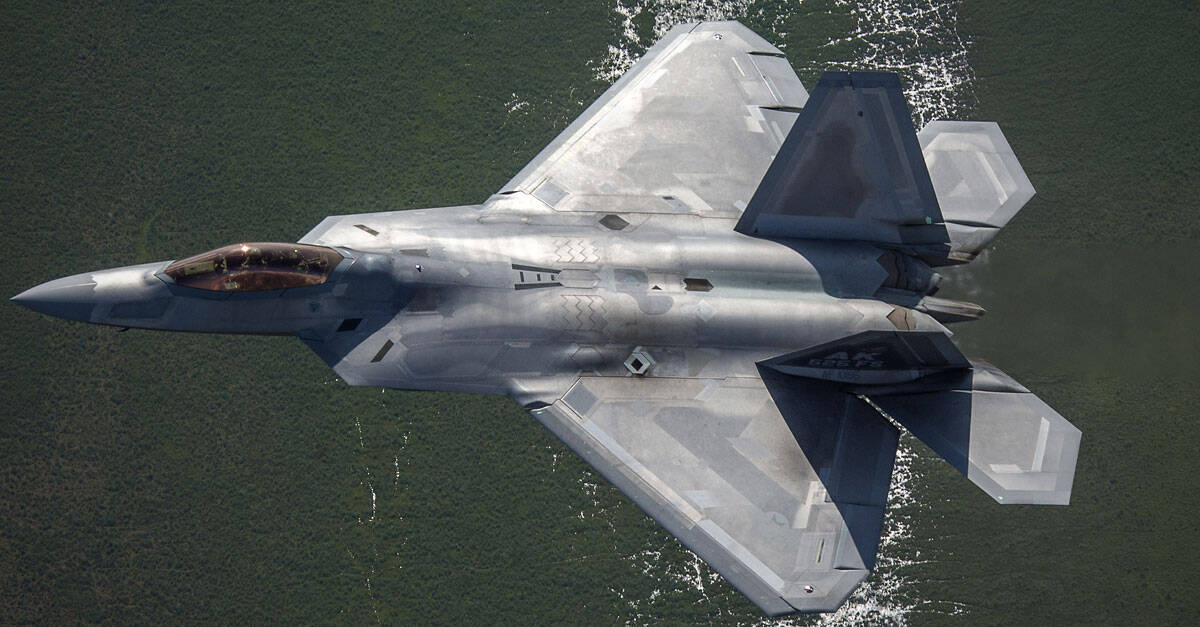
8. The F-22 Is Compliments Other U.S. Aircraft

The F-22 Raptors helps other aircraft perform better. Maj. Gen. Richard B.H. Lewis said, “When you are outnumbered on the battlefield — the F-22 helps the F-18 and the F-15s increase their performance. It gives them more situational awareness and allows them to get their expenditures because you can’t kill all these airplanes with just the weapons aboard the F-22. It takes the F-15’s and F-18’s weapons. It was very successful (in its) ability to get everybody to integrate.” It is also not uncommon for F-22 to accompany the F-35 which is optimized for air-to-ground combat, while the F-22’s designed for deep penetration & air combat.
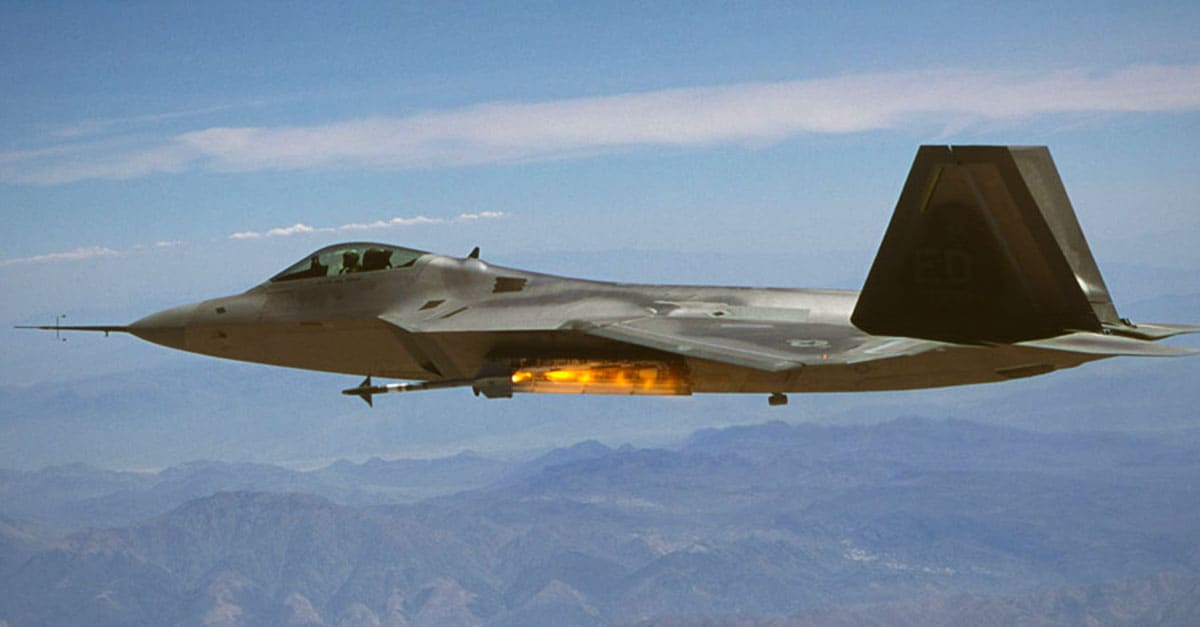
7. The F-22 Can Perform As A Mini AWAC

In an October 2017 edition of Air Force Magazine, Lt. Col. Shell (only rank given) stated that the role of the F-22 Raptors continuously changed in Operation Inherent Resolve. He said at the start of the conflict that the F-22 was 95% precision strikes shifted to 95% air superiority. Shell went on to say that the F-22 can aid evading “strategic miscalculations” by de-conflicting the airspace from enemy aircraft. Deconflict is possible since the aircraft active/passive sensors as well as the ability to operate close to the battlefield. Despite the F-22 not being a designated Airborne Early Warning Control Platforms (AWAC), the functionality of its sensors, flight and instruments make it possible for the F-22 to perform as mini-AWACS to quickly find targets and cooperate with allied aircraft.
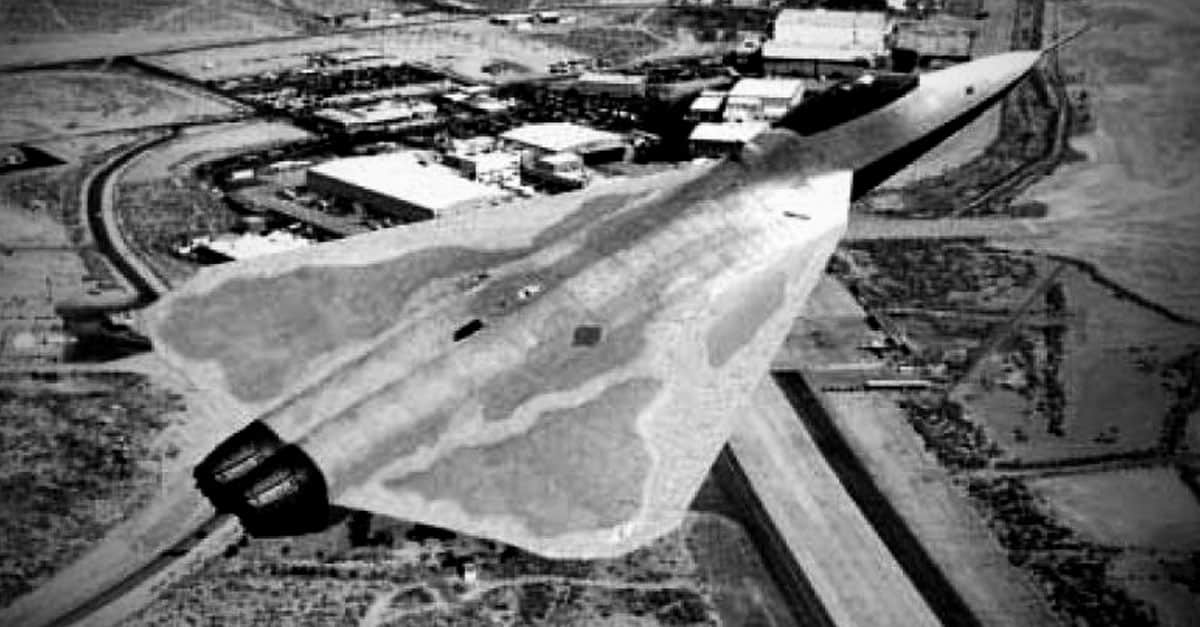
6. The F-22 Is Continuously Upgraded

The United States Air Force (USAF) officials told Scout Warrior (now Warrior Maven) that they will begin to upgrade the F-22 Raptor in 2019 to hold AIM-120D as well as AIM-9X Air-to-Air missiles and Air-to-Surface location capabilities. The Aim-120D includes increased attack range, GPS navigation, and a two-way data link. The AIM-9X has a revamped fuse and digital ignition safety device. In 2021, the Air Force also wants to upgrade the digital communications between 4th and 5th generation fighters through data links. Along with these upgrades, the Lockheed Martin is making a software adjustment titled “Update 6” planned for 2020 that will link both sensor packages of the F-22 & F-35.
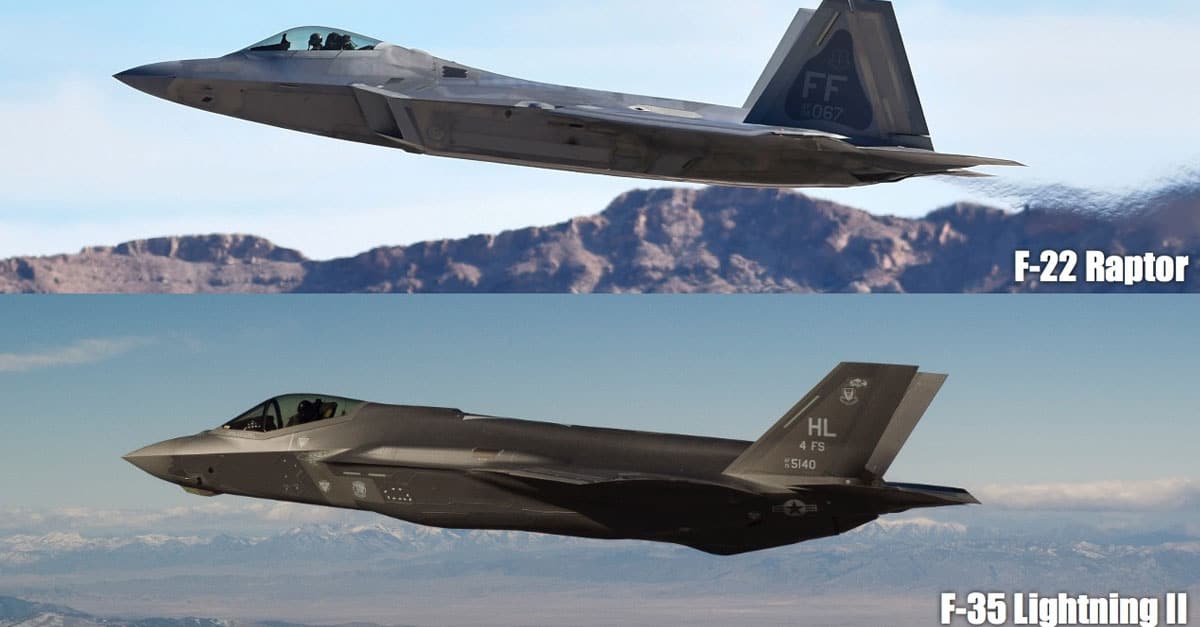
5. Many Variants & Derivatives Of The F-22 Were Planned & Scrapped

There were variants & derivatives planned for the F-22 Raptor that never came to fruition. The F-22B, for example, was designed to have two-seats. It was scraped to save development costs in 1996. Another variant was the Naval F-22. The United States Navy’s Navy Advanced Tactical Fighter (NATF) wanted to replace the F-14 with an F-22 that had variable-sweep wings. In 1993, The program was ultimately canceled in 1993. As for derivatives, the FB-22 and X-44 MANTA were proposed. The FB-22 was planned as a medium-range supersonic stealth bomber while the X-44 featured thrust vectoring controls. The FB-22 was seemingly canceled in 2006, and the X-44 Manta program ceased in 2000.
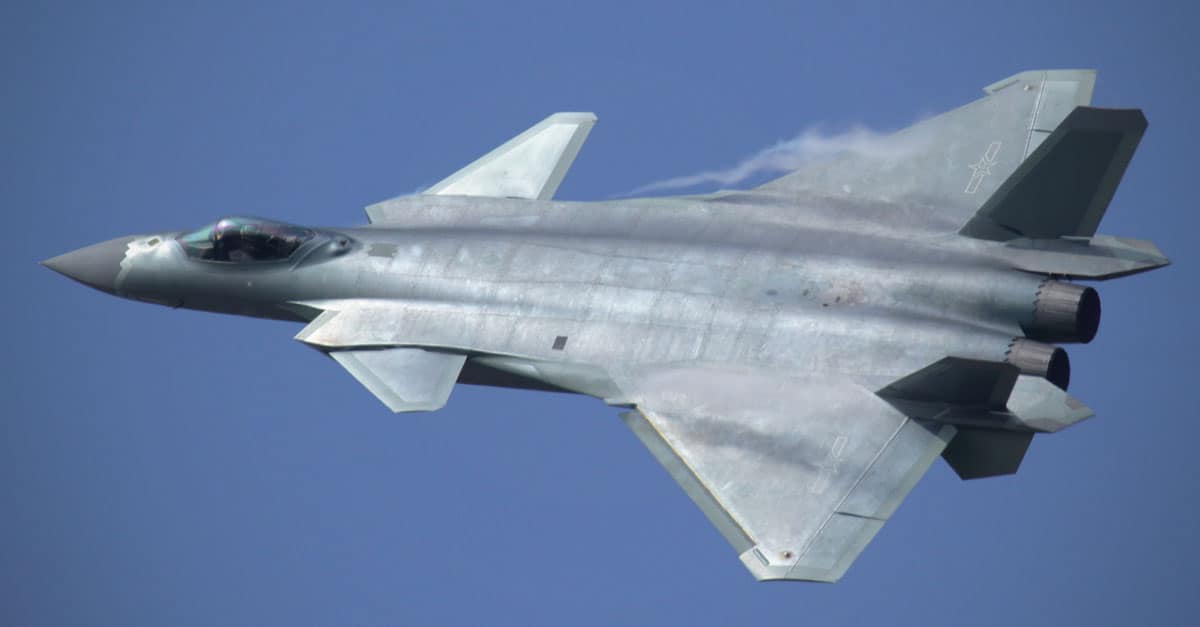
4. Lockheed Proposed Development of an F-22 With F-35 Technology

In August 2018, Lockheed Martin silently pitched a derivative of the F-22 to the United States Air Force (USAF). The alternative design would include structural changes to the F-22’s airframe as well as furnished with the F-35’s stealth coating and additional mission avionics. Early in that year Lockheed purportedly showed interest in a hybrid that would combine the F-22 stealth along with the F-35 network capabilities as well as willingness to work with the Japan Air Self-Defense Force (JASDF). The USAF rejected the proposal, and the JSADF questioned the cost and the F-22 Export restrictions.

3. Other Countries are Trying To Keep Up With The F-22s Tech

Development of the F-22 Raptor has forced other countries to catch up to fifth-generation fighter jets. Unlike the F-22, U.S. allies will be able to purchase F-35 Lighting IIs. Countries that oppose U.S. interest, on the other hand, are developing their own fifth-generation jets such as Russia’s Sukhoi PAK FA T-50 and China’s Chengdu J-20. Similar to the F-22, the Sukhoi was crafted for maneuverability & supercruise as well as stealth technology such as sensor fusion. It is also is proving very expensive for Russia to develop. With the J-20, the aircraft visually resembles the F-22. The first flight for the aircraft was in 2011 but is not expected to become active until the 2020s.
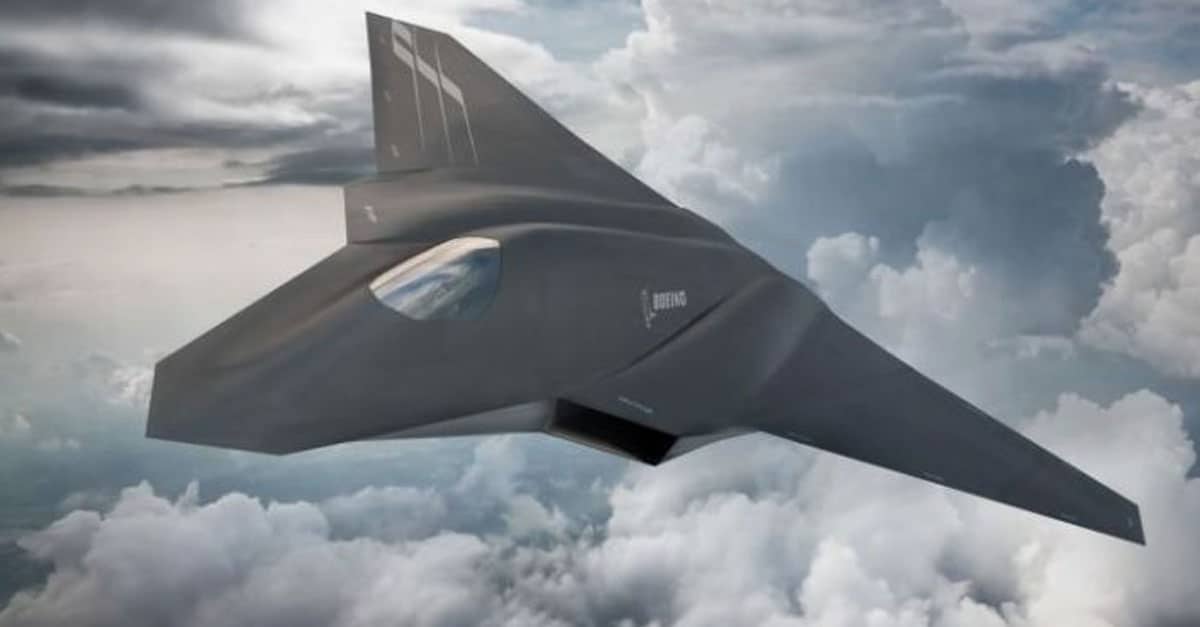
2. The F-22 Has Appeared In Major Blockbusters

The F-22 Raptor has appeared in numerous Hollywood blockbusters practically and rendered through computer graphics imagery (CGI). The first blockbuster appearance was in Hulk (2003) depicted through CGI. The actual F-22 debut was in Transformers (2007), and its follow up Transformers: Revenge of the Fallen in 2009. Director Michael Bay was allowed to film them due to his support of the military. The character Starscream was famously depicted transforming into a Raptor in the films. Another major appearance of a real F-22 was in the 2008 film Iron Man where the aircraft struck Iron Man’s suit.
1. The U.S. Air Force Is Looking To Replace the F-22

The United States Air Force (USAF) is currently working on the sixth-generation of fighter jets to replace the F-22 Raptor. It is projected to enter service in the 2030s. As of 2019, the project is known as “Penetrating Counter Air” (PCA) with the mission to continue American air superiority. The new jet would have a more efficient engine that accentuates range. It might also ditch vertical tail fins to improve stealth. A non-partisan Congressional Budget Office (CBO) estimated that the PCA could cost as much as $300 million per unit.
